
 Andy Poystila (he/him)
“You in the zoo…”
Andy Poystila (he/him)
“You in the zoo…”
 FREYA EMERY (SHE/HER) Editor-In-Chief
FREYA EMERY (SHE/HER) Editor-In-Chief
“I’m graduating in the spring and moving to Nova Scotia in the fall! Tis going to be a big year for me”


 Andy Poystila (he/him)
“You in the zoo…”
Andy Poystila (he/him)
“You in the zoo…”
 FREYA EMERY (SHE/HER) Editor-In-Chief
FREYA EMERY (SHE/HER) Editor-In-Chief
“I’m graduating in the spring and moving to Nova Scotia in the fall! Tis going to be a big year for me”
Oh man, I won’t lie—I’ve been neglecting writing this letter, knowing it would be my last. I’ve thought long and hard about what to write, and what tone I want to convey.
As many of you know, last year was a rough one for our publication. At one point, we were a team of three, trying our hardest to keep things afloat, and couldn’t even publish our issues at the first of each month. That year was my first real year being a part of the Courier more hands-on than ever. In the first week of being art director, I received my key to the office, and deep cleaned like crazy (believe me, it was needed!). This proactive attitude perfectly symbolizes how I would be taking on the Courier over the next two years.
This year has been a world of difference compared to last year! It’s been an honor seeing the Courier get back on its feet and to know that I was a part of it! In my three years of being a part of the Courier, I have really grown as a person! I’ve tried not to get emotional so many times while writing this, and I say this statement a lot for various things, but truly, I wouldn’t be who I am today if I didn’t have the experiences I’ve had working for and running the Courier.
The friendships and memories I’ve made at the Courier are priceless. Each late night and early morning spent working on layouts, illustrating pieces, and coordinating schedules has been a labor of love. I’ve learned so much from my colleagues, and the challenges we’ve faced together have only made us stronger.
I want to express my deepest gratitude to everyone who has been a part of this journey with me. Your dedication and passion for the Courier have inspired me every day. I have no doubt that the Courier will continue to be a beacon of quality journalism and creativity under a new masthead next year.
As I close this chapter of my life, I carry with me the lessons learned and the pride of being a part of such a remarkable team. Thank you for everything.
Your
emotional Editor-in-Chief -Freya





COORDINATING EDITOR
Matt Shipley (he/him) matt@capilanocourier.com
“I celebrated this year’s Lunar New Year in China”
BUSINESS MANAGER
Terrance Alanis (he/him) business@capilanocourier.com
“I want to nominate that Andre 3000 flute album for Album of the Year in the 2024 Grammy”
NEWS EDITOR
Bridget Stringer Holden (she/her) bridget@capilanocourier.com
“Procrastinknitting is my passion, I have a yarn wall at home.”
SPORTS EDITOR
Mya Fraser (she/her) sports@capilanocourier.com
“Currently watching Orange is the New Black”
FEATURES EDITOR
Gates Annai (they/she) gates@capilanocourier.com
“I’m currently working on the 11th draft of an urban-fantasy novel”
ARTS AND CULTURES EDITOR
Gwen Pemberton (she/her) gwen@capilanocourier.com
“I have now visited more foreign ERs than Canadian ones ”






COMMUNITIES EDITOR
Avery Nowicki (they/them)
avery@capilanocourier.com
“I’m re-reading Joan Didion this month! *woop* *woop*!”
OPINIONS EDITOR
Jayde Atchison (she/her) jayde@capilanocourier.com
“All I want in life is a bath that fits my whole body and unlimited pizza—is that too much to ask?”
COLUMNS EDITOR
Sara Brinkac (she/they) sara@capilanocourier.com
“My older sisters name is Teghan so, together, we are Teghan and Sara (we are not named after the duo my parents promise)”
ART DIRECTOR
Angelica Blanch (she/her) design@capilanocourier.com
“Ahhhhhhhhhhhhhhhhhh!!!!!”
PRODUCTION MANAGER & CREW ILLUSTRATOR
Andy Poystila (he/him) production@capilanocourier.com
“I love kicking old rotting logs.”
VIDEO PRODUCTION & COMMUNICATIONS MANAGER
Laura Morales Padilla (she/her) videoproduction@capilanocourier.com
“Shout-out to the people who share the space under their umbrella.”


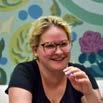


VIDEO EDITOR
Ely Davidson (he/him) videoeditor@capilanocourier.com
VIDEOGRAPHER
Dylan Smith (he/him) videography@capilanocourier.com
CREW WRITER
Lea Krusemeyer (she/her)
“I used to be a super fan of Ellen Degeneres. I still have two tattoos dedicated to her, I never really regretted getting them but I for sure wouldn’t do it again.”
CREW WRITER
Kirsten Wiltshire (she/her)
“I quoted Buster Bluth in my highschool graduation yearbook but it didn’t get printed because it was either too inappropriate or we didn’t have the rights. Either way, I love soup as much as he does.”
CREW ILLUSTRATOR
Chelle Lussi (Any)
“I love experiencing people and I loved my experience here! Xoxo, luv ya”
CONTRIBUTING WRITERS
Emily Kelsall, Yasmine Elsayed, Mizuki Kinoshita, Ren Zhang, Samantha K. Cheung, Jasper Chu, Amandeep Kaur, Janine Palencia, Millie Beatch, Jasmine Garcha, Jasmin Linton.
CONTRIBUTING ARTISTS
Sasha Lun, Jacob Schoenherr, Ethan Woronko, Jerry Kambashi, Siobhan Barry, Xaviery
Roxas, Kit Vega, Rachel Lu, Cassie VP, Eva Staub, Jasmin Linton, Tanner McMahon, Tasha Jones, Mesh Devkota, Natasha Lee, Tara Asadi, Cameron Skorulski, Celina Zhong.
FEATURED ARTISTS
Andy Poystila, Sasha Lun, Kyla Seguiban, Michelle Viet, Cameron Skorulski, Apsara Coeffic-Neou.
COVER ART
Tasha Jones.
WANT TO CONTRIBUTE?
Email editor@capilanocourier.com for interested writers. For aspiring illustrators/featured artists, they are required to send a portfolio or sample of work to production@capilanocourier.com.
@capilano.courier
capilanocourier.com

Meet your newly elected CSU board of directors and CBPS executives
NEWS EDITOR
BRIDGET STRINGER-HOLDEN (SHE/HER)
ILLUSTRATOR
SASHA LUN (SHE/HER)

The unofficial results of the Capilano Students’ Union (CSU) general election were posted to the CSU’s website on Mar. 17, 2024. They have also been gradually rolled out on the CSU’s Instagram page.
There was a turnout of 1,375 votes, which is 14.1 per cent of those able to vote. This compares to 1,670 votes (18.2 per cent) in last year’s byelection, and 1,243 (15.2 per cent) in last year’s general election.
As of April 1, results for the five executive positions and the at-large representative are still pending due to a number of complex, ongoing complaints. Updates will be posted regularly on the Courier’s Instagram (@capilano.courier) and X account (@CapilanoCourier).
So far, the CSU directors and Capilano Business & Professional Society (CBPS) executives for the 2024-2025 school year are:
President (Pending)
Vice-President External (Pending)
Vice-President Equity & Sustainability (Pending)
Vice-President Finance & Services (Pending)
Vice-President Student Affairs (Pending)
At-Large Representative (Pending)
Accessibility Justice Coordinator
Jasmeen Kaur
*Candidate did not submit a statement.
International Students Liaison
Sagar Maan
*Candidate did not submit a statement.
Mature & Parent Students Liaison
Anmol Sharma
*Candidate did not submit a statement.
Queer Students Liaison
Divyansh Saini (he/him)
Thank you everyone, I feel honoured as your Queer Student Liaison, focusing on LGBTQ+ rights, mental health, gender-neutral facilities, hosting queer events at CapU. Excited for the journey ahead, I’ll amplify LGBTQ+ voices and create a welcoming campus for all.
Students of Colour Liaison
Jaskirat Singh
*Candidate did not submit a statement.
Women Students Liaison
Sukhmanpreet Kaur
*Candidate did not submit a statement.
Arts & Science Representative
Sanchit Kwatra (he/him)
Thank you for giving me the opportunity to speak on behalf of our faculty. I’m starting to plan my goals for this semester. Please let me know if you would want to discuss any problems in the department that need to be fixed and improved. Thank you for your time and consideration.
Business & Professional Studies Representative
Harman Chahal (he/him)
I’m very excited and honoured to be elected. I am very grateful as you choose me to represent you in Business and Professional Studies. I promise to work hard for you. Thank you to everyone for the support!
Fine & Applied Arts Representative
Shruti Karthikeyan (she/her)
I’m grateful and excited to continue representing students in the Fine and Applied Arts Faculty. Thank you to everyone who voted for me. This year, I hope to increase the recognition of art and design work of CapU students, organize an art showcase event, and advocate for paid work opportunities.
Capilano Business & Professional Society President
Sophia Kara (she/her)
Thank you to everyone that voted! I’m open to hearing any suggestions regarding events and governance at skara@csu.bc.ca.
Capilano Accounting Association President
Yaseen Shivji
*Candidate did not submit a statement.
Capilano Communication Association President
Aylin Polo Calderon (she/her)
I am excited to be re-elected as the President of the Capilano Communication Association. My team and I will continue to work towards improving our students’ experiences by facilitating more networking opportunities and organizing more meaningful and impactful events. Let’s make this an exciting year!
Capilano Finance Association President
Joao Gabriel Hui Zarro
*Candidate did not submit a statement.
Capilano International Business Association President
Calvin Kruger (he/him)
I would like to thank those who voted for me, for their support. I have been busy building the IBA with faculty, staff and student support to provide the best opportunities for our students; so thank you for the chance to keep moving forward in this position.
Capilano Legal Association President
Priya McMurtrie (she/her)
I am honoured and grateful to have been reelected as President of the Capilano Legal Association. Your support and trust mean the world to me, and I am committed to serving you to the best of my abilities. If you have any questions, suggestions, or concerns, please contact me at pmcmurtrie@csu.bc.ca.
Divestment and Local Credit Unions offer Solutions

CONTRIBUTOR
EMILY KELSALL (SHE/THEY)
CREW ILLUSTRATOR
CHELLE LUSSI (ANY)
The Royal Bank of Canada is Capilano University’s bank, storing and investing student tuition. Over the years, RBC has given generously to the campus. In 2022, RBC donated $300,000 for the Early Childcare Centre. There’s also the recurring RBC Future Launch scholarship that students can apply for.
RBC and CapU are joined at the hip, and there’s a compelling case for the university to reevaluate the relationship.
RBC is the primary financier of fossil fuels in the world. In 2022, the bank spent $42 billion dollars funding fossil fuels. Since the 2015 Landmark Paris Climate Agreement, they’ve spent upwards $250 billion in total. RBC financed the now completed Coastal Gaslink pipeline and is backing the controversial TMX pipeline. However, according to the International Energy Agency, in order to keep global warming within a safe threshold, there can be no new fossil fuel developments.
Coastal Gaslink and TMX have been criticized by the UN Committee for the End of Racial Discrimination. The committee has written three letters pointing out that Canada failed to obtain the free, prior, and informed consent from First Nations.
By funding CGL and TMX, RBC has supported the criminalization of Indigenous land defenders. They’ve contributed to raids, military
occupation of unceded territory, and snipers pointed at Wet’suwet’en matriarchs. TMX has plans to cross through Musqueam, Squamish and Tsleil-Waututh territory. CapU acknowledges Indigenous sovereignty, but actively undermines it by partnering with a company that ignores the demands of Land Defenders.
The money any individual or institution stores in a bank isn’t stationary. Banks use their clients’ cash to make investments. Simply by banking with RBC, tuition money is spent funding fossil fuels. But CapU doesn’t just store cash away for a rainy day. Around $60 million is actively invested in the stock market. through a firm called Phillips, Hager & North, which is a subsidiary of RBC. Information about CapU’s investments is available through CapU’s Investment Policy, Board of Governors Meeting Notes, and Audited Financial Statements.
The Courier reached out to CapU for comment. They responded by pointing out their investment managers are signatories to the United Nations Principles for Responsible Investment (UNPRI), which is a set of voluntary and aspirational guidelines created to encourage businesses to include environmental, social and governance (ESG) factors into their investment practices. If a company has a good ESG score, in theory, it is one that is environmentally and socially responsible and ethically governed.
Being a signatory of UNPRI means that companies make a commitment to incorporate ESG into their business models and report their progress. However, one study from the Georgia Institute of Technology and Northwestern University found virtually no change with an ESG score after obtaining a UNPRI membership.
Even if being a UNPRI signatory meant institutions earned better ESG scores, ESG scores themselves aren’t always accurate representations of a company’s performance. A 2022 report from a Stanford researcher found that “while ESG ratings providers may convey important insights into the nonfinancial impact of companies, significant shortcomings exist in their objectives, methodologies, and incentives which detract from the informativeness of their assessments.”
For example, the MSCI is one of the most popular ESG rating systems. RBC’s has an AA ranking with them. That’s the second highest you can get, which makes them a “leader” in their industry.
TC Energy, the company behind the Coastal Gaslink Pipeline—the one that launched a military invasion against Wet’suwet’en dissent, and the one that’s been chastised by the UN—also has a AA rating. This rating comes even after MSCI acknowledges that TC energy’s emissions are on track to warm the world between two and three degrees.
Even if ESG ratings were accurate, CapU’s investment policy doesn’t require them to be taken into account. It reads: “The University supports and encourages its Manager(s) to incorporate ESG factors, along with other conventional analytical tools, when
evaluating investment opportunities and risks. It should be noted that ESG factors are only one aspect of analysis and should not be used as an exclusionary screen to eliminate specific entities or sectors from consideration.”
Top universities around the world have pledged full divestment including Princeton, Rhode Island School of Design and Harvard. Locally, both UBC and SFU have pledged to divest, and some believe that CapU should do the same.
Scotiabank, TD, BMO, CIBC and the National Bank of Canada are all financing the TMX pipeline, alongside RBC. Big commercial banks are for-profit institutions that are beholden to their shareholders. However, there is an alternative in locally-based and globally-minded financial institutions. They operate just like a bank except they’re member-owned. They are the BC credit unions such as Vancity, Coast Capital and Blueshore Financial. None of them loan money to fossil fuel companies. Coast Capital makes a point not to trade in unjust projects. Vancity is very vocal about climate justice, and all of their mutual funds are fossil fuelfree. This doesn’t mean they don’t care about making money; they just do it while upholding progressive values and meeting climate targets.
On its website, CapU says that it’s a “community where we value innovation fueled by curiosity and imagination. We are committed to Truth and Reconciliation through the principles of Indigenization and decolonization.” CapU current investments do not seem to align with its goals. Students work hard for a better future, and their tuition money should do the same.
CONTRIBUTOR
YASMINE ELSAYED (SHE/HER)
ILLUSTRATOR
JACOB SCHOENHERR (HE/HIM)
On Feb. 22, 2024, British Columbia unveiled its 2024 Budget, designed to alleviate everyday costs, expedite housing solutions, fortify healthcare services and cultivate a strong, sustainable economy.
“With Budget 2024, we’re tackling head-on the significant issues confronting individuals and families across the province,” said Minister of Finance Katrine Conroy in a February 22 news release.
“From urban centers to rural communities and Indigenous territories, our focus remains steadfast on ensuring decent, affordable housing, quality healthcare, and opportunities for all to thrive.”
The budget, grounded in immediate support measures, is bolstered by substantial investments to secure a promising tomorrow for British Columbians and their families. To mitigate the impact of global inflation, the BC Family Benefit Bonus promises increased financial relief for over 340,000 families, including 66,000 previously ineligible households. Additionally, a one-time BC Electricity Affordability Credit is set to alleviate electricity costs for individuals and businesses struggling with rising expenses.
Recognizing the strain on small businesses due to inflation and Advocates express concerns over limited investment and ongoing challenges
labour shortages, the budget raises the Employer Health Tax exemption threshold to $1 million, easing financial burdens and fostering resilience in the entrepreneurial landscape.
To ensure housing is utilized as homes rather than speculative assets, the province introduced a flipping tax starting in 2025, targeting speculators and curbing housing costs. Furthermore, enhancements to the First Time Home Buyers program and tax adjustments aim to lower barriers to homeownership and stimulate new construction in both the housing and rental sectors.
“Our approach in Budget 2024 rejects the notion of austerity in response to global challenges,” Conroy asserted. “Instead, we’re building upon BC’s solid foundation to deliver essential services and infrastructure vital for the well-being of our communities.”
Acknowledging the demographic shifts and growing population, the budget allocates significant resources to bolster healthcare services, including investments in BC’s cancer plan and initiatives to support seniors. The budget also addressed the accessibility to in-vitro fertilization services, ensuring equitable access to family-building options.
Education remains a cornerstone of the provincial agenda, with Budget 2024 earmarking funds for additional teaching staff, special education resources, and school infrastructure improvements to accommodate the growing student population.
A staggering $43 billion in capital funding over the next three years underscores the government’s commitment to infrastructure development, spanning education, healthcare, housing and transportation sectors.
With climate change looming as a critical challenge, British Columbia commits to building a cleaner, resilient economy, investing in climate mitigation efforts, enhancing wildfire prevention measures and advancing the transition to a lowcarbon future through initiatives like CleanBC and the Critical Minerals Strategy.
Despite economic headwinds, Budget 2024 emphasizes continued investment in affordability measures and essential services, with projected deficits declining over the fiscal plan. Minister Conroy reaffirmed the government’s dedication to prioritizing the wellbeing of residents and fostering a thriving, inclusive society amidst global economic uncertainties.
The 2024 BC Budget struggles to address the lack of postsecondary funding and the ongoing demand for more funding. Advocates, including the BC Federation of Students, discuss the government’s reliance on international students and the sudden cap on permits. “It fails to make up for years of underfunding and the impending budgetary complications brought on by the federal cap on international student permits,” stated a February 22 news release.
This puts a strain on the students’ capabilities to afford postsecondary education. According to WorkBC, “about 75 per
cent of these job openings will require some form of post-secondary education or training [between 20232033].” With this in mind, failure to address these issues could have significant consequences for the province’s economy and social mobility, emphasizing the importance of prioritizing student needs beyond the budget provisions. The 2024 provincial budget will provide around $9.23 billion to post-secondary education by 2026-2027, with $845 million dedicated to staffing and operating costs. CUFABC expects the faculties to work hard together with the government to provide stable funding.
While attending the provincial budget meeting, Manpreet, the Vice President External of the Capilano Students’ Union and Chairperson of the Alliance of BC Students, observed that the budget had limited new funding for post-secondary education. “With uncertainties like international student caps and rising university fees, we hoped for more investment. We saw Ontario putting a lot of money into post-secondary after the whole chaotic announcement to get their system through it, we didn’t see the same here [in B.C.],” she said. “Continued capital investments, especially in student housing, are crucial to avoid future struggles— we urge ongoing support in this area.”


After eight years at CapU, Dangerfield reiterates commitment to ensure the continuity of long-term solutions to pressing student issues
On March 4, Capilano University president, Paul Dangerfield, announced that the 2024-2025 academic year will be his last at CapU.
Paul Dangerfield went from being a faculty member at Capilano College in the early 2000s, to president of Capilano University in 2016. Considering that presidents are appointed on a five-year term, it is unusual for Dangerfield to be leaving in the fourth year of his second term. To find out more, the Courier sat down with him to find out about the timing of his decision, his academic journey and what he’s most proud of accomplishing during his time at CapU. Dangerfield also discussed the expected results for the long-term projects he put in place to address pressing issues for students such as housing, course registration and international tuition fees.
“I went into science simply because it was the only thing I really felt that I could get into,” explained Dangerfield, looking back to his first degree in chemistry. He then explained how he struggled a lot with written communication, which led to his initial choice for a science degree, and it wasn’t until computers came along and helped with spell check that he realized, “it was a learning disability— I’m dyslexic.” He then decided to switch programs, and spent the remainder of his post-secondary education in business and HR.
Dangerfield later started facing serious financial trouble, around his third year of undergrad. “I ended up joining the military just so that I could get through university… and it took me 20 years of being in the military to figure out that I could go do something else,” he remembered.
During his time at CapU, Dangerfield played an important role in the transition from a college to an accredited university that has added at least two new degree programs since 2018.
Undeniably there was a lot of growth, which led to a new challenge— how to ensure that this development is sustainable. To answer this question, a strategic plan called Envisioning 2030 came from conversations with Indigenous Elders in 2019, trying to imagine what they wanted CapU to look like in 10 years. Dangerfield explained that part of the reason he is stepping out on the fourth year of his second five-year term is to allow the next president to have a full term before reaching 2030. “If I was an incoming president, I’d like to be able to have some say in the plan,” Dangerfield said.
With still over a year before he leaves his role as president, Dangerfield shared the planning behind long-term solutions for some of the most pressing issues for students. He addressed the results of a recent CSU survey that interviewed 120 students, which revealed that 45 per cent of students live in Surrey, and 37 per cent spend between two and two-and-a-half hours on public transit to get to CapU—the underlying issue being the lack of affordable housing in the North Shore.
“Housing has been a top concern since the fall of 2016, when the CSU had done a survey and ended up with a petition with over 1000 names of students who at the time would like to be in student housing,” he said, adding that soon after, CapU secured the three buildings on Dollarton Highway, where the current residences reside.
In 2017, the university started the process to build their own 360bed on-campus housing, which was approved in 2021. That was step one, and Dangerfield indicated that two more phases are needed to
ensure that all first-year students (about 2,000) are able to go into housing.
“I’m working on another project with a developer who’s going to build an additional 3- to 400 beds just adjacent to the main campus, and we’re working on putting a proposal together to the provincial government for phase two, so that would get us up to over 1000,” Dangerfield said. Additionally, Dangerfield mentioned advocating efforts with the three municipalities in the North Shore to support densification and sustainable housing development, which includes rentals.
Another pressing issue for students is course registration. CapU has been receiving more students than they can accommodate, and many international students have had to register in courses at TRU to then transfer them back to CapU as a temporary solution to meeting the minimum credit requirements to maintain their full-time student status.
Dangerfield explained that there is still work to be done to ensure accurate forecasting of what programming and courses are needed for students, as well as an improved hiring strategy, since “there aren’t enough Faculty and PhDs in the Lower Mainland.” Dangerfield acknowledged that unlike the housing, this issue is within their control, and he is confident that they will have this sorted out in the next 12 months. “My hope would be ‘better’ for September, ‘good’ by January, and ‘really good’ by next summer,” he said.
While the province doesn’t regulate international student tuition fee increases, Dangerfield has managed to keep a two per cent cap on international tuition fee increases—in line with the two per cent cap on domestic tuition.
Dangerfield responded to the concern of not having an official policy on this to guarantee future presidents keep the cap by explaining that the budget for the next three years has already been built based on only a two per cent increase. He also explained that increasing tuition at a high rate is not part of their values and commitment to make the experience for students as positive as they possibly can. He called it, “the best way to differentiate ourselves as a university that’s actually managing its money really well and not burdening the students.” However, Dangerfield doesn’t see a policy being created around the two per cent cap, “because once it’s a policy, it’s set forever. However, he added, “what I can say is, more importantly, it’s actually set in our values.”
Dangerfield plans to stay at CapU until the end of the 20242025 academic year, by which time a replacement will be in place. He shared with the Courier that he does not know who is being considered for the role, but that the ideal candidate will have a real passion for education, learning, community, and will embrace the six values of Envisioning 2030.
When asked about his plans after CapU, he said, “I might simply wait until I finish to figure out what I want to do.” However, he is certain that he’s not going to retire.
SPORTS EDITOR
MYA FRASER (SHE/HER)
ETHAN WORONKO (HE/HIM)
Both the women’s and men’s CapU basketball teams have wrapped up their seasons after competing at the provincial tournament from February 29 to March 2 at Okanagan College.
The women’s team finished second in their league and earned a bye to the semifinals. They faced off against the home team of the tournament, the Okanagan College Coyotes at Kelowna Christian School but fell short by six points. They played the Vancouver Island University Mariners, the first seeded team in the bronze medal match, but unfortunately also fell short by six points to lose the game.
The team’s top three scorers of the season were all named amongst several PACWEST All-Star Teams.
First year forward Barcha Hnizdilova of Ústí nad Labem, Czechia was named a Second Team All-Star, and also named to the AllRookie Team and topped it off winning the PACWEST Rookie of the Year Award. Hnizdilova averaged 11 points and started every game of the season.
Fifth year point guard Kirsten Abo was named a First Team AllStar. Abo dropped 17.5 points per game, a personal high during her time as a Blue.
Third year forward Madeleine Coffin was named a Second Team All-Star. Coffin averaged 12.4 points and tied a season best of 17 boards in the last game of the regular season. When reflecting on her role on the team, she expresses how it has changed in a multitude of ways. “I’ve become more confident regarding my playing style (taking open shots without the fear of missing), I’m understanding my job on the court more and gaining experience as to the best way to contribute to the team’s successes.”
Despite the outcome, Coffin shares her outlook on the situation. “Win or lose you’re going to be around your teammates for an extended period, sharing a hotel room, going out to dinners, doing homework together, hanging out in each other’s rooms. Being with teammates for five days nonstop, you’re bound to return home

closer to one another then when you left.”
In the off season, she explains how their coach, Chris Weimer organizes ‘open runs’ which helps keep everyone playing at a high intensity and having fun. “He invites in a multitude of players from other PACWEST teams, USport teams and some NCAA DIV one and two teams to come out and scrimmage with us. It’s one of my favorite parts.”
In regards to next season, Coffin says she’s looking forward to growing with other returning players as well as welcoming in our new recruits. “We currently have signed Mia Parkin from Australia and having met her a few months ago, she is a perfect fit into our culture. I’m also excited to see how we as a team can come back from our upset this year.”
The men’s team finished fifth in their league and played in a quarterfinal match winning against the Columbia Bible College Bearcats and advancing to the semifinals to play the first ranked Vancouver Island University Mariners. They unfortunately came up short by seven points which put them in a bronze medal match against the Langara College Falcons.
The team rallied and came up strong, clenching a 14 point lead at halftime. The final score was 89 to 86 for the Blues. These are the first bronze medals for the team since the 2011 season.
As a third year player but first year as a Blue, guard Kash Lang of Idaho was named a First Team All-Star. He led the team averaging 15.4 points per game and started in all regular season games.
First year guard Arshya Ghasemi was named to the All-Rookie Team. Ghasemi averaged 9.1 points per game, started in 12 of them and scored 24 points in just his third university game.
The team is holding an identification camp on Apr. 6, 2024 to start scouting new talent for the next season.
Follow both teams (@capuwbb and @capumbb) on Instagram to keep up with the basketball teams.

SPORTS EDITOR
MYA FRASER (SHE/HER)
ILLUSTRATOR
JERRY KAMBASHI (HE/HIM)
A special shout-out and congratulations to the women’s volleyball team for being the only CapU team to earn a spot at the Canadian Collegiate Athletic Association (CCAA) national championship this year, and doing so for the first time in ten years.
Outside hitter Nnya Mbaoma was named a women’s First Team All-Star. Anika Gatto was named to the Second Team All-Stars while also being selected Top Libero.
The Blues finished third in their regular season and placed second at the PACWEST provincials — winning silver medals. They traveled to Red Deer, Alberta to compete from March 6 to 8 in the CCAA national championships.
They won their first game over the Collège Lionel-Groulx Nordiques of Quebec. In the semi-finals, they lost to the first seeded team from Alberta, Lakeland College. They faced Ontario’s Humber Hawks in the bronze semi-finals but fell short.
First year setter Sophie Yarish describes her time at Nationals as an amazing experience, noting how they had a banquet on the first day which helped break the ice and gave some opportunity to mingle amongst other players.
Regarding the tournament, Yarish explains how awesome it was to see the team both competing hard and having fun. “We played hard every day and I’m so proud of the team,” she said. “The tournament was extremely well run and it was such a positive environment. It was incredible to watch some of the best teams in Canada play.”
She shares how the team has come a long way and she’s excited to see it continue to grow. “Each and every individual has improved from the beginning to end, and as a team we’ve created so much chemistry.”
Off season for the women’s volleyball team often involves
lots of prep for the next season to come. “I like playing beach volleyball, getting touches and reps on an indoor court, watching film, and lifting.” Yarish and the team are looking to push even more boundaries in the following season.
The men’s volleyball team had a more challenging season this year. Nonetheless, they won over the first ranked College of the Rockies in one of their last games and showed lots of potential for the next season to come. Outside hitter and Brazilian international student Dario Pereira was named a second team All-Star.
Despite not having as much success on the court as the team would’ve liked, second year setter Brayden Labossiere shares how the overall experience was still unforgettable. “I got to meet an amazing group of guys and create memories that I will cherish for years to come. Each day I found myself grateful to be a part of such a supportive school and team environment that helped me and supported me to become the best version of myself.”
Apart from meeting new team members, practicing hard and creating an even stronger team bond for next year, Labossiere expressed, “I am excited for the opportunity to represent our school and to be a part of something greater than myself.”
In the off season, Labossiere explains how, “the focus shifts from preparing for the following week to preparing long-term for the season ahead.” This includes lots of strength and conditioning and a couple team practices weekly. “Additionally, over the summer, I spend a lot of time at Kits Beach playing beach volleyball, training and competing in tournaments.”
During this time, the CapU Blues Department of Athletics and Recreation will also be looking for a new head coach in the season to come.
Follow both teams (@capuwvb and @capumvb) on Instagram to keep up to date on the volleyball teams.
Ready, sweat, go
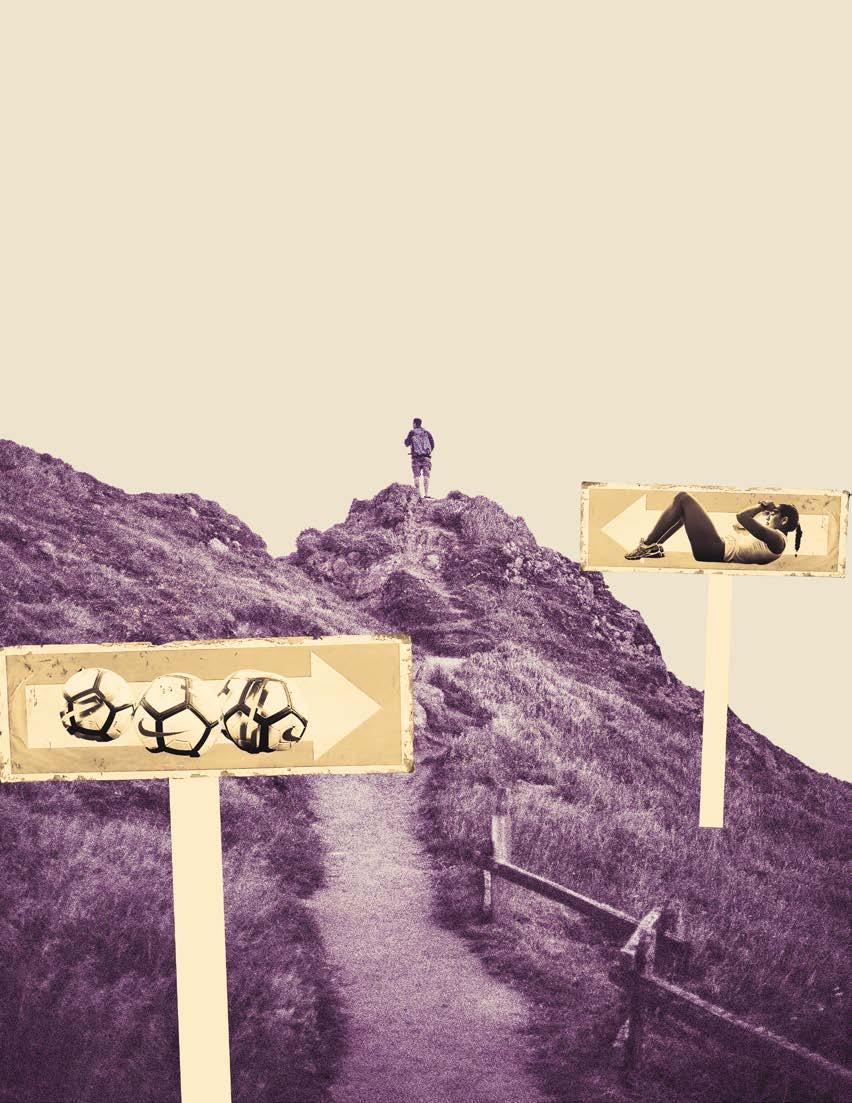
SPORTS EDITOR
MYA FRASER (SHE/HER)
ILLUSTRATOR
ANGELICA BLANCH (SHE/HER)
CapU Rec aims to provide a variety of low barrier health and wellness opportunities for CapU students, staff, faculty and community in a fun, safe environment. The university offers many recreational opportunities; however, a lot of students are not aware of them. While nothing is 100 percent confirmed for fall 2024 yet, here are all the cool things to potentially look forward to when you are back in September.
Starting with the free services. Everyone is entitled to a free fitness membership for the weight room. With that membership, there are free fitness classes too. This year, Pilates fusion was one of two classes offered. It mixes traditional Pilates with strength training and ballet inspired movement to build muscle endurance and improve joint stability. Stretch fusion was the other class, mixing stretching and strengthening exercises to assist people in reducing and managing stress. This class aimed to restore and improve posture, mobility and strength.
All the intramural sports are free to join. This includes soccer, basketball, volleyball and badminton. This is a fun way to stay active, be a little competitive and play a fun sport in the gym. There are free outdoor clubs to join that will run rain or shine. These include the running club, the walking club and the hiking club.
‘Move More North Shore’ is a free program aimed at improving well-being for students or employees who are not currently physically active. With the help of an active health coach, you can develop a two-month action plan for physical activity and receive support throughout the two months by identifying barriers, obtaining social connection, and making lifestyle changes with goal setting support.
For a small cost of just five dollars, there are more fitness classes available. They offer a small strength and conditioning group training and a spin class which aims to increase your heart rate while having fun. Their vinyasa yoga classes offer
a balanced practice that enhances both strength and flexibility while placing an emphasis on controlled breathing. There’s also a dance class to showcase a variety of dance styles that will get your sweat on, improve your health and hopefully build more self-confidence.
At a higher cost, they offer personal training sessions. For CapU students, staff and faculty, training prices are three sessions for $150, six sessions for $270 or 12 sessions for $480. They vary from 40 to 50 minutes in length.
In order to use these services, you must first create an account and become a member (free) for all CapU students. You can do so on the CapU website. Under student services, click Athletics & Recreation, then scroll down and click Campus Recreation. That’s where you can register and find any additional information. For most services, no previous experience is necessary.
Some services like the Centre for Sport and Wellness (CSW), weight room, personal training and the drop-in gymnasium hours are all open to the community, but at a cost.
CapU Rec also offers student jobs and volunteer opportunities throughout the year. Anastasiia Melikhova is a student who works for CapU Rec. She explained how she enjoys getting to be part of all the events and activities happening on campus. “The flexible schedule really fits well with my classes,” she said. “Overall, it’s a great opportunity that keeps me connected with the campus community and gives me some valuable skills along the way.”
Visit the main website mentioned above for further information about CapU Rec or their job and volunteering opportunities. Don’t forget to follow them on Instagram (@capu_rec) to learn more and hear about any upcoming events.

CONTRIBUTOR
MIZUKI KINOSHITA (SHE/HER)
ILLUSTRATOR
SIOBHAN BARRY (SHE/HER)
A lot of people in the world like to play or watch sports — or enjoy a combination of the two. While they can be fun and beneficial for staying healthy, people are also impressed by sports games and athletes. However, sports can play a part in damaging the natural environment and could also have an impact on athletes.
One example of climate change is many athletes experiencing heat stroke during crucial matches due to the effects of climate change. Paula Badosa is a professional tennis player who suffered the effects of heat stroke during the 2020 Tokyo Olympic Games. This resulted in her having to drop out of her quarterfinal match. Novak Djokovic is another professional tennis player who was suffering from the heat but was able to manage by using ice and air conditioning to avoid heatstroke in the Tokyo Olympics. With summers getting increasingly hotter, more solutions need to be arranged for these games.
Big sporting events like the Olympics or the World Cup cause lots of damage to the environment. Many people come from all over the world to participate. This includes athletes, trainers, family members, staff, medical, security and the plethora of fans. There are huge amounts of gas emissions from everyone’s traveling and there are even more emissions from transporting materials for building the stadium, selling products, foods, beverages and bringing equipment for athletes.
When these big sporting events are held, there is also much more waste being produced. All the plastic bottles, wasted foods, supplies and other goods. After a sports event is finished, a lot of materials that were used in the building of these stadiums or facilities will all be garbage too.
Another major concern is that swimming pools also affect the environment. They require a lot of water, chemicals, and energy to produce clean and safe swimming pools. The energy to prepare the water and keep the water warm even causes environmental effects including CO2 emissions. Furthermore, if water containing chemicals is released into the environment, it will cause water pollution, and destroy the habitat of animals, fish and other marine animals.
On a much smaller scale, even gyms create waste. While they help keep the public active and healthy with loads of equipment and supplies, it’s often not recyclable. Once a machine breaks, or it’s time for a new and updated one, the previous one is just garbage.
This is not to deny all activities of sports. It is to shine light on how even in sports there’s lots of emissions and waste. There should be solutions that consider the ecological footprint that sports have too.

“Aries (my birth horoscope)”
@1998_kyla


XAVIERY ROXAS (SHE/HER)
Behind the process of recycling in BC and how CapU plays a part
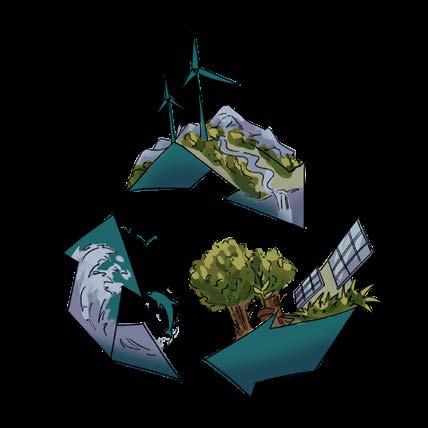
A coffee cup with the last dredges of a London Fog. A cardboard pizza box stained with grease. A Tetra pak juice box with a straw still lodged inside. They all meet as one in the same campus recycling bin. There are fast decisions made by students every day, where a hand plays a claw game with the sorted bins of compost, recycling and landfill—often giving up and putting the offending object into whatever they see first. The memory vanishes as soon as they step away. Would it be too much to place the blame on the consumer, however, when the recycling and waste processes are almost mystical in nature? When it feels like everything is set up to fail? What’s the point anyway? Isn’t everything being dumped regardless?
It is easy to despair with these kinds of thoughts, but consumers in British Columbia can be reassured to know that B.C. is making strides in leading the charge for innovative recycling systems in Canada.
Recycling systems, and waste systems in general, are complicated. They vary from municipality to municipality, and numerous companies, organizations, the government, and even informal recyclers are involved at every step of the process. The difference for B.C. is a small but powerful shift: manufacturers are responsible for the recycling of the materials they produce. This is called the Extended Producer Responsibility, or EPR, which formed the basis for the BC Recycling Regulation introduced in 2004. This gives an incentive for companies to design and streamline products to use less packaging and be easier to process in recycling plants. It helps create accountability and social responsibility for the impact of businesses on the land.
EPR has been effective: Recycle BC, a non-profit organization that handles all residential paper and packaging recyclables, reported an 86.2 per cent recovery rate across all materials within the recycling system in 2022. Detailed in that same report, 98 per cent of plastic packaging processing in the system remained in B.C., as opposed to overseas shipping. In addition, according to a CBC article with a spokesperson from Recycle BC, British Columbia has a contamination rate of 6 per cent— contamination being the presence of food, other pollutants, or unrecyclable materials making a recyclable load unable to be processed—compared to a 25 per cent contamination rate that is common in places such as Toronto and Edmonton. This lower rate of contamination means that more of B.C.’s waste can be recycled.
Other recyclables are often under the care of stewardship agencies, which are non-profits formed by producers to fit within EPR principles enforced by the law. There are many in B.C., covering paint to lightbulbs. Some common ones include Return-It, which handles beverage container recycling, and Tire Stewardship BC, a program known for tire recycling.
All of this work is in an effort to move towards a circular economy. This term describes the idea that waste and pollution
is phased out and every product is made with materials that are already available, rather than extracting new materials from the Earth. A circular economy creates products designed to be reused, repaired and recycled.This system would ideally be restorative and sustainable, hence the idea of a circle.
At CapU, our process starts at the brightly coloured multi-bins found around campus.
From there, what’s collected is picked up by GFL Environmental, a waste management and environmental services company. What’s in the paper and plastic bins are transported to a material recovery facility (MRF). Here, the materials are loaded onto conveyor belts to start the sorting process. This involves manual and machine sorting to separate different materials. After items are organized, similar materials are baled or tied together to be shipped to recycling end markets where they are processed into pellets, shredded material, fibre for clothing or other woven items and other building blocks for new products to be made.
Unfortunately, the situation at CapU is less than ideal. “Placing waste in the wrong bins is considered a major concern,” says Nedu Ossai, a CapU site manager.
Contamination of a bin means that the contents might all go to a landfill. This problem is exacerbated by the fact that proper sorting is not supported by the current system. “Students have no means to rinse plastics,” Adrian Refeen, a facility manager writes—this rinsing is often a crucial step for materials to be viable for recycling.
“In terms of solutions, I would say having a sustainability [class] (SUSM 101) could be something the university should consider as a general orientation course,” continues Ossai.
Some of the most egregious offenders for landfills are drink cups. At CapU, students can rinse coffee cups and plastic cups for cold drinks and put them into the blue bin. Cup sleeves can be put into the yellow bin that is designated for mixed paper and cardboard.
Despite the importance of recycling, it is the least effective ‘R’ of Reduce, Reuse, Recycle in saving our planet. Even better than students sorting recycling is reducing the amount of waste coming into collection. This might look like bringing a reusable cup to get Tim Hortons coffee in, or bringing lunch to school. For the university, better labeling, the introduction of a prerecycle rinsing system and education around recycling, or a sustainability course in general could be a step forwards in this eco-friendly journey.
More information about what can be recycled can be found at https://recyclebc.ca/.

CONTRIBUTOR
YASMINE ELSAYED (SHE/HER)
ILLUSTRATOR
KIT VEGA (SHE/THEY)
Vancouver is internationally recognized as a primary example of environmental sustainability in urban settings. Introduced in February 2009, the Greenest City Initiative aimed to make Vancouver green by 2020 through strong ecological policies, extensive green spaces and a focus on public transportation and cycling infrastructure. Although difficult, Vancouver’s commitment to sustainability is reflected in its widespread adoption of renewable energy sources and active community engagement in environmental initiatives. As we delve deeper into the reasons behind Vancouver’s acclaim as one of the greenest cities globally, it becomes evident that its status is firmly rooted in measurable actions and outcomes.
With the summer of 2023 being the worst in Canadian history, many climate change activists brought the concern to the streets to make it well known that the current measures that the City of Vancouver is taking were insufficient. Protestors in 2023 called on the City of Vancouver to make a stronger plan to combat climate change and its future effects. A protest of this caliber was not the first; this protest echoes similar sentiments expressed by students in 2019, inspired by figures like Greta Thunberg, who demanded stronger action from adults to protect the environment for future generations.
A climate change advocate and Capilano University alum describes that while Vancouver might be green, it is not enough. “Vancouver certainly looks very green primarily due to its trees and natural beauty, but the city itself and surrounding municipalities certainly do not strike me as the greenest city,” they shared, emphasising that Vancouver could do better. “The giant sewage plant that is
constantly dumping in the ocean. The E.coli levels were insane. A lot of waste goes into the ocean, so swimming at the English Bay in Kitsilano is unsafe. This will likely get worse due to climate change as it rains and the tide changes. Many streets are dirty, and the traffic is insane — major car pollution. In terms of recycling, Vancouver is doing a pretty good job as far as collecting trash and recycling goes. But I am not convinced that it goes to the right spot.”
According to the CBC, “The province has emerged as a leader across North America, with the wide range of materials it accepts to its province-wide recycling program and the percentage of those materials that gets recycled and turned into other products.” However, in the same article, the CBC addresses Vancouver’s landfill in the Delta, and says that it “has an end date of 2037. It opened in 1966 and currently has 225 hectares filled with garbage. Even though RecycleBC processes 90 per cent of what it collects, on average only 78 per cent of products manufacturers create are recovered to be processed.”
Furthermore, the anonymous source highlights Vancouver’s lack of preparedness for extreme weather events, such as snowstorms, citing a comparatively low snow removal budget compared to other Canadian cities. “Vancouver should take appropriate measures and take this seriously. Vancouver does not compare to other cities.” The CBC describes the budget compared to other provinces; BC seems to have the lowest, “Vancouver and Surrey both budget around $4 million a year for snow removal, while everywhere else in Metro Vancouver
is under a million dollars. But in every other major Canadian city, the figure is much higher, topped out by Montreal at $187 million last year.”
While Vancouver has gained international recognition for its efforts in promoting environmental sustainability, recent protests and critiques from climate change activists and concerned citizens shed light on the city’s ongoing challenges. Despite initiatives like the Greenest City Initiative and advancements in recycling, concerns persist regarding pollution, waste management and climate change preparedness. The voices calling for more decisive actions and the importance of continued commitment to addressing these issues and implementing practical solutions are getting louder.
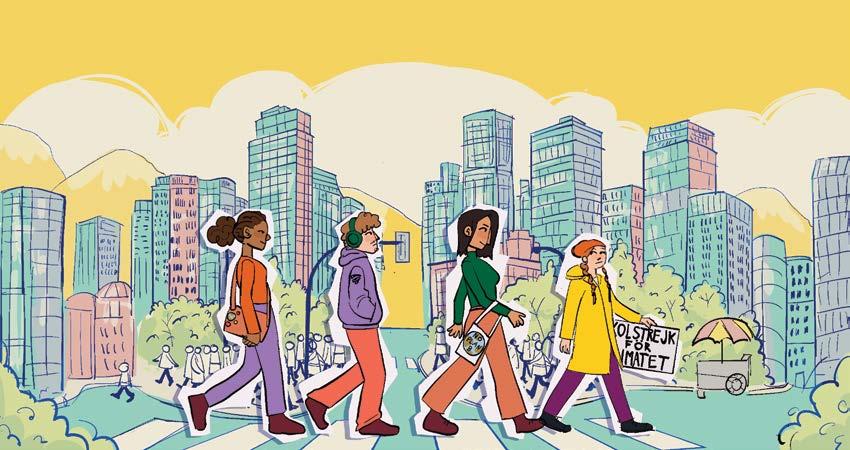

When was the last time you thoroughly considered the health and well-being of the environment? Are you familiar with the 17 SDG goals? And more importantly, when was the last time you actively considered how your lifestyle can affect the world’s energy resources? Last month, Capilano University (CapU) hosted a full week to bring awareness and education towards sustainable practices.
The second week of March marked the first CapU Sustainable Development Goals Week, more recognized by its acronym (SDG Week). However, what are the SDG goals? SDG Week’s core provider is the Sustainable Development Solutions Network (SDSN), founded in 2012 after the Rio Summit to promote social, economic, and political sustainability. This is where the development of the SDG goals was formed and the Paris Agreement on Climate Change as cited by the SDSN website. In addition, the SDSN provides many resources for creating policies and research work on climate, energy, extractive and land resources and the six SDSN long-term transformations. CapU, alongside other universities in BC, such as UBC and SFU, are members of the SDSN network. In 2015, the 17 SDG goals would be developed by members of the United Nations to be used as the primary framework for making Earth a place that would be more sustainable and liveable, as outlined by the 2030 Agenda for Sustainable Development. In relation to CapU’s goals on sustainability, the events showcased at SDG week correlate to the CapU 2030 Illuminating Academic plan.
Throughout SDG week, students, faculty, and staff were invited to attend free workshops and talks about sustainable education and sustainable goals and initiatives on the North Shore. The highlight of that week was CapU’s first Sustainability Fair in the Birch Cafeteria. In attendance at the fair were CapU TRECSA, CIE, CityStudio North Vancouver (CityStudioNV), City of North Vancouver, EarthWorks and many more who were advocating for awareness towards the SDG 17 goals. This would not have been possible without the organization of Tourism and Outdoor Recreation instructor Roy Jantzen and his research assistants Raymond Ang and Jason Lau. Many students in attendance at the fair were invited to participate in a bingo game using the 17 SDG goals. “I came up with the idea of Bingo Games. This entertaining activity challenges students to familiarize themselves with the SDGs represented at each booth and CONTRIBUTOR SAMANTHA
encourages them to explore as many booths as possible,” said Lau. Furthermore, Jantzen shared that the idea for the bingo game was inspired by the fact that the 17 SDGs looked similar to a bingo card.
In December 2023, CapU was awarded a grant worth $1.5 million from the Natural Sciences, Engineering Research Council of Canada (NSERC), which is a grant that provided Jantzen the funding towards “external industry partnerships towards non-profits or commercial” that Capilano University currently has. In his personal teaching portfolio, Jantzen also mentioned that partnering with CityStudioNV is one of his preferred work-integrated learning hubs for creating projects for his students. In addition, creating projects outside the classroom has been a beneficial strategy for him to help his students understand sustainability education while incorporating the 17 SDG goals. His most recent teaching endeavour was last fall in partnership with REC 156- Natural History for Tourism and Recreation with CityStudioNV, City of North Vancouver and IMPACT North Shore. Jantzen’s learning outcomes for his students included challenging his students to create an outdoor walking tour in Mosquito Creek Park.
“I can talk about the SDG (goals) within my class, but at best, it’s 35 students. More commonly, maybe 25 students. For me, we don’t have awareness at this university, so I thought an SDG week and my connections with outside non-profits and industry and student connections, I thought it will all fit to help educate students on that,” said Jantzen. SDG week is an outcome of Jantzen’s passion for sustainable education outside of the classroom, and his interest in the 17 SDG goals became the foundation and a priority for promoting sustainable education at CapU. Finally, as remarked by Jantzen on SDG week, “Anybody looking at the 17 sustainable development goals, they’re going to find something that is going to relate to them. No poverty, zero hunger, somebody who is physically active, good health and wellbeing.”
As of today, most programs at CapU require students to take to meet the Science and Technology, and there are a number of courses students can choose from that include sustainability education, climate change and energy resources; examples of these courses include GEOG 435 Energy, Communities, and Environmental Change and GEOG 316 Climate Change. While this is the first year that CapU is putting on SDG Week, this is just the beginning of CapU’s plan and Jantzen’s hope to share more sustainable education initiatives with more students in years to come.

Two university graduates reflect on their lives since crossing the stage
COLUMNS EDITOR
SARA BRINKAC (SHE/THEY)
CREW ILLUSTRATOR
CHELLE LUSSI (ANY)
“It’s nice not to have constant guilt,” Golrokh Nouri reflects as she cooks herself dinner. She cracks pepper into the pan and remarks on “that horrible state of when you are studying and miserable.” Nouri remembers a classic student paradox, “when you’re not studying you’re miserable because you feel guilty about not studying.”
It has been almost a year since Nouri graduated from Simon Fraser University (SFU) with a bachelors in Mathematics. While she attended school she competed on the varsity women’s wrestling team. To say her chosen path through university was stressful and time consuming would be an understatement, but her journey of painful devotion, intense studying and hard work has led her to where she is now—unsure and confused, pursuing a career in… agriculture…maybe.
Nouri thinks back on being 18 with resentment. The norm of young people being pressured into making a huge decision on what they’ll do with the rest of their life, complete with limited understanding and a contract worth thousands of dollars in tuition, started to seem fundamentally flawed as she got older. “Who the fuck came up with that system?” She adds.
For Nouri, pursuing math when she was 18 meant “working super-duper hard for an insane euphoric feeling.” For a while she romanticised the pleasure of solving equations without considering the practical reality that goes into it. However, after about three years into her degree she decided, “you know what, math doesn’t add up.” Matter of factly she placed her meat in the pan, adding, “it started getting kind of boring.” But she had no other interests and was near finished, so she remained in the degree.
“I thought I was going to do science,” Meera Eragoda, an alumni of Capilano University, shared a similar sentiment to Nouri. “When I was 8 to when I was 17 I was like ‘I am going to be a veterinarian.’” Eragoda, who is now pursuing a career in journalism, realized, “science is kicking my ass and also I don’t like it,” in their first years of school. It was that moment of frank clarity that saved them from a degree they hated but left them totally unsure what they wanted to do instead.
After a few years working they returned to Capilano and completed the Legal Administration Assistance Certificate. However, after entering the workforce they once again realised they were in a place they strongly disliked and craved something more. Eragoda decided to finish a bachelors in History because it was something they figured would be interesting.
Whether you are Nouri who decided to stick in a degree you’re unsure of, or, you’re Eragoda and take your time to choose something you feel more compelled toward, neither approach seems to prepare you for the reality of the working world. However, Eragoda notes they don’t regret taking their degree. Neither does Nouri. While both had their problems with the
system, they felt their time at university allowed them to find their interests and make discoveries that have deeply informed their path now.
However scammy or rewarding the university experience was to them, one fact remained, they would have to enter the working world at some point.
“It’s definitely eating at my soul,” sighs Eragoda, “there’s a lot compromising.” Eragoda says the practical reality often looks different to one’s imagined career path in university. “The job I’m currently in is definitely a compromise,” they add. Eragoda is not currently working a job in the journalism stream because, especially while starting off, finding sustainable regular work in a freelance industry is near impossible.
Eragoda identifies doing a job you hate for the benefits as being a trade off of living under capitalism—another challenge they faced after engaging in theory throughout university. There’s a clear paradox of being aware of structures you want to dismantle but being unable to escape the need to eat, care for yourself and grapple with societal pressure inherent to said structure. Ideology doesn’t put food on the table.
Eragoda went deeper into the guilt that surrounds a lot of post grads changing their original career paths, “The capitalist mindset of ‘your job needs to define you’ is something I’m still struggling to undo.” Eragoda notes how much worth we tend to bank on our jobs, convincing ourselves, “you’re not achieving because your job is not necessarily what you want to be doing.”
“Your day job is not going to be the solution to everything,” Eragoda says. Both individuals have had to face harsh practicalities after coming from 20 plus years in a system that taught theory alone. And while the frustration and exhaustion of this growth shows, the acceptance of the challenge and hope for fulfilment remains. Their dreams just look a little different from what they pictured in the classroom.
“I’m not going to be satisfied with just staying here.” Meera says. They’ve been told by many people that it’s going to be hard and unsustainable, but they are now understanding that just because it’s hard doesn’t mean it’s a dead end. Many life avenues can be explored and changed. And perhaps that’s the beauty of practical reality. Each experience you engage in will offer totally unexpected results. With that new information comes new patterns of growth and self discovery. But just because we can see the beauty in the process, don’t fall into the trap of expecting it will be wonderful and easy. As Meera reminds us with a little tough love: “everything is fucking hard.”

CBC and autistic journalist Justin McElroy shares what it’s like navigating neurodiversity in a neurotypical industry
CONTRIBUTOR
JASPER CHU (HE/HIM)
ILLUSTRATOR
CASSIE VP (SHE/HER)
Sunlight shines through CBC Vancouver’s office windows on a cold February day. Sitting in one cubicle amidst a maze of them, Justin McElroy is on his cell phone, speaking with a resident of Lions Bay who is explaining the political drama unfolding in the city under their new mayor, Ken Berry. This job has been McElroy’s routine since 2014, and being their municipal affairs reporter is a role he’s made into his own.
At a casual glance, McElroy would look like your average reporter for Canada’s national broadcaster. Diagnosed with autism around age six, he excelled at spelling, playing chess and memorizing textbooks. But social cues were where he struggled. Recalling his experiences, especially interacting with peers, he would “feel this sort of emotional distance,” explaining, “I can’t figure them out quite as quick, or [I] will say something, and they’ll sort of react awkwardly.” Because of this, he tried to understand how his peers interacted to improve himself.
McElroy stands out in the news media for being diagnosed with autism—something that’s not often recognized or accepted. McElroy started at the University of British Columbia, studying political science, but found his love for journalism through working as a contributing editor at their student newspaper, the Ubyssey.
“It’s compiling information, and telling people about that information,” he says. “The idea is to tell people accurately what has transpired and when someone has lied or done something deceitful.” He likens the profession to that of a town crier, “you get that opportunity and that privilege to tell people, ‘Hey, I spent a lot of time looking into this thing, and I think it’s interesting, and I hope you find it interesting too’.”
However, his first few years as a journalist weren’t easy. His supervisors thought he lacked bedside manners, good looks and formal training. He recalls them saying, “you’re the weirdo that knows too much and has bad eye contact and is too blunt with them when you think you’re right.” McElroy adds that it took time to temper that feedback and learn about local news. McElroy wasn’t alone in this. Paul Finch, who is chair of Autism Canada and himself on the spectrum, says there’s a preconceived notion that those with autism “won’t follow or won’t be able to intuitively follow the established norms and social customs of whatever situation we’re in.”
Some of the most significant issues are social skills like maintaining eye contact and gauging someone’s tone of voice. McElroy says, “if someone uses body language to indicate that they’re having a difficult day at work… I can’t read it; I don’t know what’s happening.” He adds that his coworkers rarely recognize the missed cue as a function of autism and instead assume he’s intentionally ignoring that they’re having a difficult day.
Finch says not all employers are aware of the diagnosis, which negatively affects employment opportunities for those with autism. “[Employers] may get spooked; they may get worried that somebody is not able to otherwise fill a position. They may make assumptions about what else is going on. They may not understand or realize it’s autism.” McElroy himself didn’t disclose his diagnosis to CBC Vancouver until a few years after first being hired, “A few years after
that, I became public about the fact that I was autistic. This was also the thing I did not tell my coworkers or managers at the time for all sorts of reasons.”
In hindsight, McElroy is one of many who initially struggled when he was first employed, and it’s an issue that has not gone away. In the 2017 Canadian Survey on Disability, 33 percent of individuals with autism aged 20 to 64 reported being employed, and 54 per cent reported getting their pay from municipal social assistance or welfare, Old Age Security and Guaranteed Income Supplement, among other sources. Another 2018 survey by Health Canada found those with autism in the above age range make a median income of $2,000 a year.
McElroy stresses the importance of advocating for your needs on the job, “talk about it from a support-based way that doesn’t make people defensive but still allows you to thrive.” He understands that it may need to be overexplained to employers but adds that it’s better than the alternative. Working at CBC Vancouver was about selling his strengths while helping his employers understand the areas where he wasn’t as good. However, Finch has noted a lot has changed since the 1990s with a growth in diagnosis and knowledge about autism, “There’s a different level of understanding right now, and it’s still not where it needs to be, but I think it’s definitely elevated.”
Today, McElroy has made a name for himself at CBC Vancouver as CBC Vancouver’s municipal affairs reporter. With over 80,000 followers on X (formerly Twitter), he’s become well known for creating graphics and charts for CBC covering statistics on BC’s municipalities and the COVID-19 pandemic. It included issues from COVID-19 case counts in foreign countries to how municipal councillors voted on a particular motion. His work has won him numerous accolades, the latest being the Jack Webster Award for Excellence in Digital Journalism, Vancouver Magazine’s Power 50, and an Honorary Fellow position at Douglas College.
Despite facing adversity, McElroy has become a household name throughout Greater Vancouver for his work. His experience with autism and the path it put him on to becoming a journalist is a story about what it takes to be successful in the job market amidst the stigma facing those with autism. It’s not about understanding if someone with autism is capable; it’s understanding their particular capabilities and how best to use them.
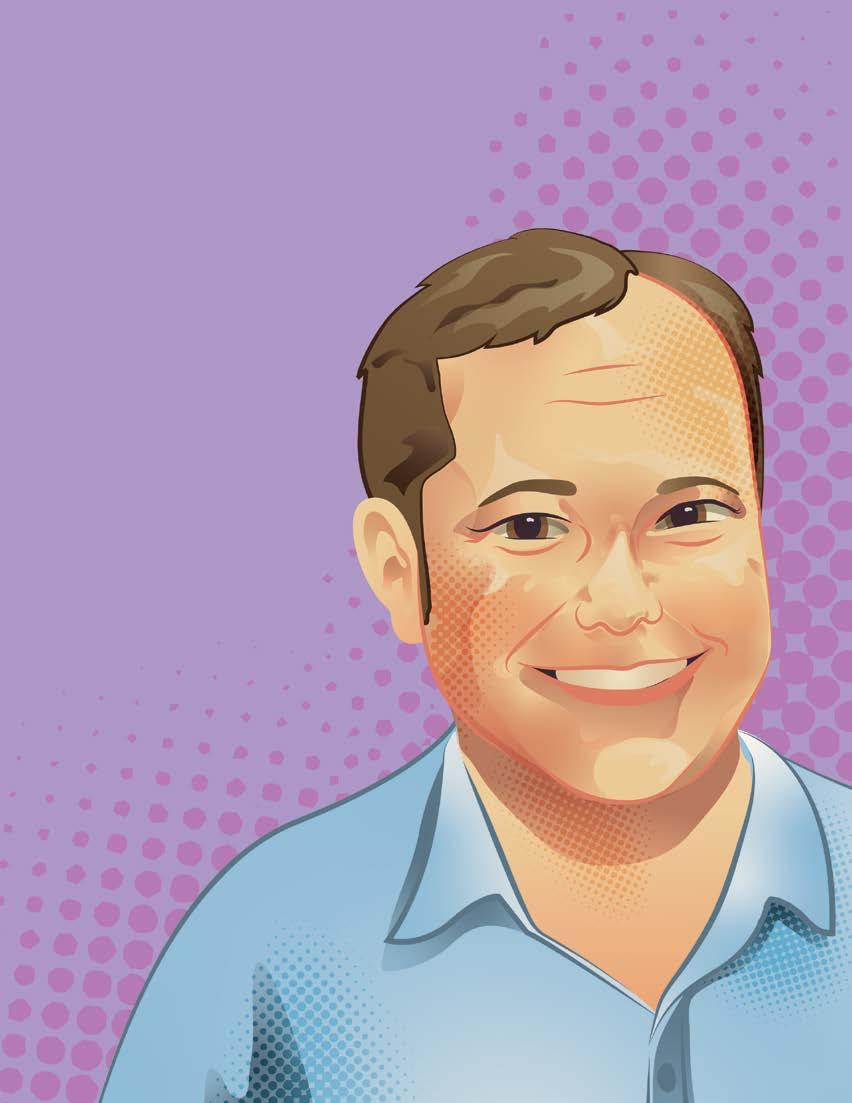
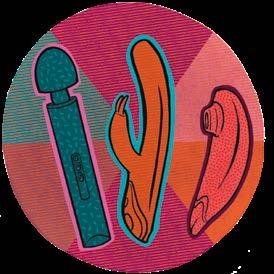
Social taboos and a lack of proper sex education leaves vagina-havers in the dark–so let’s clear some things up
AMANDEEP KAUR (SHE/HER)
ILLUSTRATOR
EVA STAUB (SHE/HER)
There are many myths, social taboos and unreliable sources of information regarding female orgasms. Emily Nagaski details her modern take on female sexual health in her book, Come as you are, debunking the common misconceptions on female orgasms while exploring their history, and shedding light on how adult women negotiate the complexity of their bodies and sexual experiences in the face of disinformation and social constraints.
The myths surrounding the female orgasm are frequently a result of historical and cultural norms that place a higher value on male pleasure than on the experiences of women. The perception that female sexuality is mysterious and difficult has been strengthened by traditional gender roles and cultural expectations, which also supports the view that women’s pleasure is incidental or even non-essential. Unrealistic expectations and judgements regarding women’s sexual experiences have been placed upon them, ranging from Freud’s rejection of clitoral orgasms to the social pressure to stick to customs focused on men.
A common misconception is that a female orgasm can only be consistently achieved through vaginal penetration. This misperception stems from old beliefs about women’s sexual anatomy and Freudian theories, which mistakenly linked an orgasmic reaction to vaginal intercourse. Since only a small percentage of women actually regularly experience orgasm through vaginal penetration, there is a need for greater acceptance and understanding of a wider range of sexual experiences.
Contrary to popular belief, a female orgasm isn’t usually the epitome of pleasure. Pleasure is contextually dependent and subjective, just like any other sense experience. Orgasm intensity and sensation are highly influenced by mood, surroundings and relationship dynamics; this results in a wide spectrum of experiences from excited to hardly measurable. In order to validate the variety of sensations that women have and to advance sexual empowerment, it is important to acknowledge the contextual aspect of pleasure.
There is no one-size-fits-all orgasmic experience. Orgasms differ greatly from person to person, and even within the same person from one experience to the next. Something that is enjoyable one moment could seem unpleasant or different the next. Context is important since it effects how an orgasmic experience is felt, whether it be during physical activity, during a depressive episode, or even after a horrific incident like sexual assault.
Orgasms do not exist in a hierarchy. Sexual pleasure can legitimately be experienced through clitoral, vaginal, breast, or even toe orgasms. Regardless of the kind of stimulation that causes them, all orgasms are legitimate and equally meaningful. The priority should be on feeling pleasure and fulfillment rather than trying to achieve an orgasm. People can explore their sexuality without feeling compelled to stick to stereotypes of what defines a “successful” sexual interaction when they embrace pleasure as the ultimate aim.
Improving sexual relationships requires patience, selfcompassion and the creation of a sex-positive environment. More satisfying sexual experiences can result from identifying and resolving problems that limit enjoyment, whether they are emotional or physical obstacles.
It takes a change in viewpoint to eliminate stereotypes about female orgasms—one that values pleasure, celebrates diversity and recognises the complexity of human sexuality. Through questioning outdated beliefs and encouraging a welcoming and open society, we may enable people to accept their sexual experiences confidently and joyfully.
Beyond busting stereotypes, it is critical to draw attention to lesser-known aspects of female sexuality and health that are sometimes overlooked in the media. For instance, female enjoyment includes a wide range of sensations, intimacy and arousal in addition to orgasm. It is imperative to recognise and celebrate this diversity in order to advance women’s empowerment and sexual well-being.
Comprehensive sexual health education also includes important topics including menstrual health literacy, reproductive health and sexual pain disorders. Women must speak up for their own sexual and reproductive rights and get the care and information they need by promoting a more welcoming and general approach. Access to comprehensive sexual health education remains a serious barrier for many people, especially women, despite increased awareness and support for initiatives. A lack of readily available, reliable information regarding female orgasm and sexual pleasure is a result of cultural taboos, weak curriculum standards and the stigmatisation of female sexuality.
Discussions regarding female sexuality are frequently looked down upon or considered improper in many societies, which prevents honest communication and education on the topic. Many women are left ignorant
or confused about their own bodies and sexual responses as a result of this silence, which reinforces myths and presumptions. Healthcare systems frequently fail to meet the specific needs and concerns that women have when it comes to their sexual health. Obstacles to obtaining care and information about female orgasm and sexual pleasure include embarrassment, stigma and a lack of training for healthcare professionals.
However, adult women are taking greater control of their sexual health education through a variety of outlets despite cultural barriers and disinformation. The growth of online forums and resources devoted to sexual wellbeing is one way. These platforms give women a place to exchange stories, get information, and dispel common misconceptions. Furthermore, programmes that support sexual literacy and empowerment— like seminars, workshops and educational campaigns—are essential in enabling women to discover and comprehend their own bodies and desires. These programmes work to close the knowledge gap on sexual health and advance a broader understanding of female pleasure by encouraging candid conversation and busting stereotypes.
Due to social pressures and outdated notions, many people have misconceptions regarding female orgasms. It is difficult for women to accept and value their own bodies because of these beliefs. However, women can feel more knowledgeable and confident by having honest conversations about sex, encouraging one another, and acknowledging that every person’s experience is unique. It is critical to understand that orgasms manifest differently in each person and can occur in a variety of ways.
To remove these obstacles and empower women to feel confident and at-ease with their sexuality, society needs to improve education and support. By expanding the knowledge and keeping an open mind, people can ensure that women receive accurate information and feel confident in their abilities. It all comes down to appreciating human differences, understanding one another, and supporting one another.

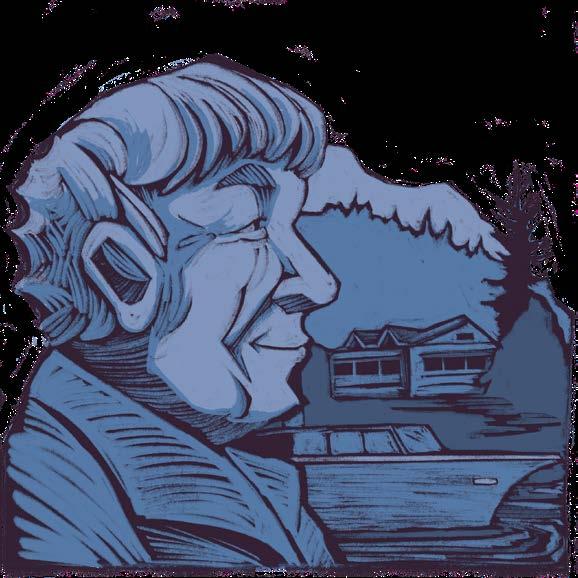
What Dr. Eric Paetkau’s experience as one of the only doctors on the Sunshine Coast in the 60s can tell us about the current rural healthcare shortages
Enticing doctors to stay in rural communities requires a variety of benefits, namely an improved work-life balance
On the last night of his honeymoon in the Bahamas, Dr. Eric Paetkau changed the course of his life with one phone call.
In his hand, he held a list of 50 locations in British Columbia that were hiring doctors. The career advisor had recommended St. Mary’s Hospital in Pender Harbour, which served the Sunshine Coast’s population of 9,000 people. She’d said it just seemed like the place for him.
That night in 1959, he sat at the hotel on the phone, speaking with Dr. Al Swan: “Are you still looking for help?”
The man on the other end of the phone paused for a moment before saying that yes, he was still looking.
Making his way to the Sunshine Coast immediately with his new wife so that Swan could go on vacation, Paetkau was surprised when he showed up to work. One of his first patients was a large 75-pound German Shepherd.
A man came into the hospital and Paetkau recalls him saying, “Doc, you’ve got to pull a tooth on my dog, he’s got a toothache.” Paetkau explained that he’d never dealt with dogs, nor had he pulled teeth. He remembers the guy responding, “Well, get a book and read up on it, I’ll sit here and wait… the doctors here pull teeth.”
It was a Sunday, so Paetkau took some time to read up on it, and at the end of the day, successfully pulled the dog’s tooth.
Arriving in a small rural community in the midst of a doctor shortage meant Paetkau had to become a jack of all medical trades. He was often the only doctor working, and had to pull teeth, put down animals, act as a coroner, and deal with everything from logging accidents to delivering foals.
Sechelt is now in a similar situation—albeit on a larger scale. St. Mary’s (Sechelt Hospital) now serves all 50,000 Sunshine Coast residents and will likely be stressed due to Sechelt Medical clinic’s closure at the end of last year.
About 5,000 Sunshine Coast residents are currently without a physician, and the number is only growing as physicians move away or retire, according to the Sunshine Coast Division of Family Practice.
Pender Harbour’s only physician, Dr. Colin Sutton, also left in mid-November and does not currently have a replacement. A local search firm has advertised the role both locally and internationally, but the 70-plus hours work weeks and the 30-kilometre drive to the Sechelt Hospital—which is required to fulfill the hospital part of the role—makes the role undesirable for any physician wanting a work-life balance.
While doctor shortages are an issue across Canada, rural communities are especially affected because of the long hours physicians are required to work to ensure everyone is treated. One-fifth of Canadians live in rural communities, but only eight per cent of practicing Canadian physicians serve those communities, according to a 2020 article in Canadian Family Physician.
One problem that remains to be solved in the long hours, as rural practitioners are more likely to do out-of-hours work, as shown in Rural Remote Health.
When Paetkau was a general practitioner in Pender Harbour, he found this to be more like 70 hours a week as he had to work until everyone was taken care of. Sutton, the physician who left Pender Harbour in November, sometimes worked over 70 hours a week, while male physicians in Canada were only shown to work 52.2 hours on average according to a 2020 survey conducted by the Canadian Medical Association.

“We didn’t get out of the clinic until seven o’clock, but nowadays, doctors shut down at 4:30 p.m.,” says Paetkau. “It’s hard to do if you’re in a small rural area and something happens and you’re off hours—in an emergency, you have to go.”
The long hours also bleed into a healthy work-life balance. “My career had taken a heavy toll on my family who had to endure constant disruptions to planned events, vacations that had to be taken off the coast, and my long absences,” Paetkau said, recalling that once he didn’t see his then teenage daughter for almost three weeks.
Despite the demanding hours and extensive responsibility, Paetkau fell in love with the Sunshine Coast immediately upon arrival and has yet to leave. “I didn’t come to stay [but] I knew within a couple of days, I never wanted to leave,” said Paetkau, who ended up working at the hospital for 42 years until 2002, when he began doing locums and hospital accreditation work across Canada. He still lives on the coast though, minutes from the hospital.
While retired now, he found that a three-month rotation is a feasible way to address the shortage. Another surgeon from Williams Lake who was struggling to handle being a solo surgeon decided to come and share the Sechelt practice with Paetkau after Swan left.
“We knew that three months was something we could handle,” Paetkau says, adding that it was a stressful three months, but better than both of them burning out. This allowed him time to travel with his family and do hospital accreditation work across Canada. “If they had doctors that could do relief work [that would be of immense help], but there’s no such thing unfortunately.”
He also found that hands-on training for nurse practitioners helped alleviate the strain on the system. However, his main hope for the coming years is simply more doctors. “I don’t really know any other answer than just more doctors. If a
doctor doesn’t want to go to someplace and a place can’t attract a doctor for other reasons, they’re just not going to go.”
The rural Sunshine Coast came with its drawbacks but afforded him the chance to practice a wide scope of skills, in a variety of settings. Paetkau was also able to participate in continuity care over patient’s lives, and he continued to run into at least a dozen former patients at the care home where he took his wife for respite care until she passed in December 2023. Both of those are influential factors in the choice to practice in a rural community, according to a 2017 report by the Society of Rural Physicians of Canada.
Also mentioned in the report was independence and the ability to partake in decision-making. That’s one drastic change that Paetkau noticed over the course of his career. “In the beginning, when we started off at Garden Bay, there was a hospital board of volunteer citizens in the community, and any decisions that had to be made, they would just sort of say to us—‘well you decide,’
While they weren’t major decisions, they involved reconfiguration of operating rooms and other alterations around the hospital that made their, and the nurses’ lives, easier. “We made a lot of decisions in those days, and then eventually when the hospital moved to Sechelt, the board took over making all those decisions,” he said, adding that doctors don’t really get a say in hospital decisions nowadays and it would be nice to be consulted more.
While Paetkau doesn’t have all the solutions, the Rural Road Map Implementation Committee is working to find solutions to rural healthcare shortages and advance the Rural Road Map for Action to ensure quality healthcare in Canada.
“All of these difficulties—the bureaucratic upheavals, the physician shortages and the constant pressure of being on call twenty-four hours a day—are both challenges and opportunities not unlike those the medical community was facing when I [started my career],” Paetkau said. “Like the old challenges, these new obstacles will eventually be dealt with.”
 Michelle Viet (she/her)
Michelle Viet (she/her)

CREW WRITER
LEA KRUSEMEYER (SHE/HER)
ILLUSTRATOR
JASMIN LINTON (SHE/HER)

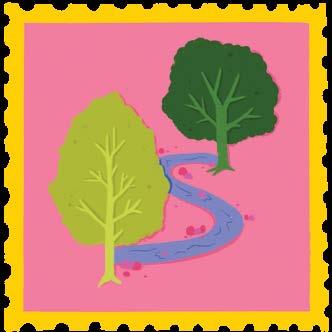
Some ideas that might inspire you
The semester is almost over, and for most students that means time to explore this beautiful city and the surrounding area. Vancouver and the rest of the Lower Mainland offer a rich variety of summer activities and the following selection will highlight some of the best options for students who finally have the time to get out and have some fun.
Vancouver has a great selection of patios, and is the perfect spot to spend an evening patio-hopping between bars and restaurants. Either stay within one neighborhood such as Gastown and enjoy a nice glass of wine at Local, or switch between various spots in the area. Yaletown, Lonsdale and Mount Pleasant are also great neighbourhoods to explore. It is up to you to decide if comfort or the urge to explore is your group’s priority.
Number two on the list is one of the most popular activities in Vancouver, hiking. A hike up Grouse Mountain, for example, is a daytime activity that can be easily combined with a patio-hop in the afternoon. The hiking trails in Vancouver and the surrounding areas are known Canada-wide. Grouse Mountain can be accessed by bus or car and offers the perfect hiking opportunity for all sorts of students. There is an option to take a gondola to the summit as well. It is on the more expensive side but if you just want to enjoy the view and don’t want to sweat, the gondola is the way to go.
Opening at the end of April every year, the Richmond Night Market offers a big selection of food vendors and fair activities that are fun to explore alone or with a group. Tickets can be bought online or on-site and seasonal passes are available
Bowen Island is a little more time-consuming and would work best as a day or weekend trip. It is only a twenty-minute ferry ride away from Vancouver, where variety of activities await you. Visitors can choose between boat tours, bike rides or cider tastings, and those are just a few of the options that Bowen Island has in store for its guests.
Next up we have whale watching. This activity is on the pricier side and it is never guaranteed that you will spot a whale, but if you are someone that has always wanted to see a whale, this activity is for you.
A more cozy and less time-consuming summer activity is watching a movie in Stanley Park, every summer there are a variety of movies that are shown outdoors. All you need is a few friends, a big blanket, and maybe a drink and a snack.
This list could go on and on forever because Vancouver is full of activities that could fill multiple summers, so here are a few more ideas. Farmers markets, a day spent at Wreck Beach or a visit to the tulip fields in Abbotsford. Have fun this summer, and use your time in between classes to explore and relax.
Environmental initiatives at a corporate level are difficult. How does Tentree measure up?
CONTRIBUTOR
JANINE PALENCIA (SHE/HER)
ILLUSTRATOR TANNER MCMAHON (HE/HIM)
Tentree, a Vancouver-based apparel company, grew in popularity in the 2010s touting their ambitious mission: plant ten trees for each item of clothing sold. The company gained the nation’s attention after winning a $100,000 deal on Dragon’s Den in 2013, though their mission was seen by some Dragons, namely Kevin O’Leary, as riding off a “fad” of sustainable consumption.
Over 10 years later, Tentree’s success has proven that sustainable practices are what consumers want. But is Tentree actually making a positive impact, or is it all just for show? Here’s a breakdown of Tentree’s practices, their goals and the checks and balances in place to keep them accountable.
Tentree’s blog, The Environmentor, provides consumers a view into Tentree’s tree-planting initiatives and impact. Their blog post, The 10 Golden Rules of Tree Planting: Tree Planting Done Right, explains how “[t]he wrong tree planted in the wrong place, in the wrong way can backfire on well-meaning efforts to benefit people and the planet.”
The company highlights problem areas of tree-planting initiatives, and calls attention to their focus on protecting existing forests and promoting biodiversity, choosing the right species of trees that can withstand changing climates, and centering each initiative around the local communities within the areas they are working in.
Tentree’s Human Rights Policy Statement outlines the company’s commitment to ethical employment practices worldwide, and Tentree’s Supplier Code of Conduct outlines expectations in their partner suppliers’ aligning their practices and values with Tentree’s. Tentree falls short with their transparency around the rest of their supplier activities, however; though Tentree states that their manufacturers (as of 2023) were located in China, India, Vietnam, Indonesia, the Philippines and Turkey, they only provide a short list of suppliers on the Ethical Manufacturing section of their site. The suppliers’ profiles also do not provide a lot of information around their operations, though some list additional certifications they’ve attained around upholding international labour standards.
Scope 3 emissions, which are carbon emissions relating to a company’s product or services that are outside of a company’s direct control, remains one of the most challenging obstacles to achieving carbon neutrality.
Tentree has built programs aimed at engaging customers in their carbon emission goals, in an effort to move closer to circular business practices. Impact Wallet, Tentree’s membership program, allows customers to contribute, either through direct purchase of a tree-planting initiative, or through purchase rewards that can then be used to finance a tree-planting initiative. Tentree also addresses a circular economy model through two programs, Circularity and The Reshop. Circularity encourages customers to return used clothing for store credit, while The Reshop provides a marketplace for people to re-sell their used Tentree pieces.
In January 2021, Tentree joined the Trillion Tree movement and pledged to plant one billion trees by 2030. At this time, Tentree has planted over 105 million trees, which means that the company will have to ramp up efforts quite quickly. To meet this goal, Tentree would have to plant 130 to 150 million trees each year for the next six to seven years, a significant jump from their current progress.
One of Tentree’s most esteemed accomplishments is its B Corp score. B Corp designation recognizes when “a business is meeting high standards of verified performance, accountability, and transparency on factors from employee benefits and charitable giving to supply chain practices and input materials.” Tentree has a 136.20 score. For context, to be designated a B Corp, an organization has to score at least 80.
Tentree’s 2022 sustainability report highlights three major goals to further their climate targets: submission of climate disclosures to CDP (formerly Climate Disclosure Project), getting their Science-Based Targets approved, and meeting goals set for their Climate Neutral certification. Tentree’s CDP disclosure, reporting on the company’s environmental impact, have been submitted for 2022 and 2023, however, their scores are not publicly available.
Since the 2022 report, Tentree was able to get their Science-Based Targets approved, providing them a path to reduce emissions in line with the Paris Agreement goals. With regards to their Climate Neutral certification, confirming Tentree’s commitment to eliminating carbon emissions, Tentree falls a bit short. According to recent data, Tentree has yet to meet one goal, with two goals (reducing factory emissions by working with factories to implement renewable energy programs and reducing the impact of air freight on the business) having passed their “complete by” dates.
Though Tentree has not met every one of their targets, their impact as a singular company cannot be understated. Environmental change requires collective effort, and Tentree is getting everyone involved, from suppliers to consumers. Their accomplishments and successes have shown that sustainability is more than a fad, it’s the way forward. Sorry, Kevin.

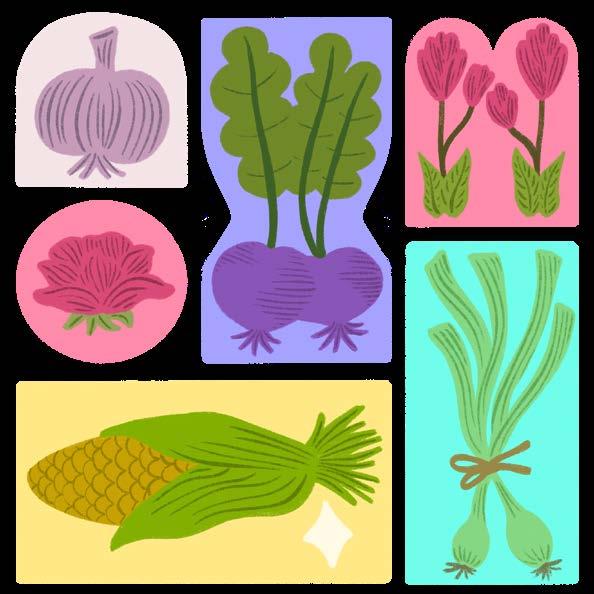
A guide to summer produce and how to make this summer the tastiest ever
ARTS & CULTURE
EDITOR
GWEN PEMBERTON (SHE/HER)
ILLUSTRATOR
FREYA EMERY (SHE/HER)
Summer is almost here, and that means that many of your favourite foods are coming back into season. Not only is shopping for local produce in season great for the environment, it can help you save money by avoiding the cost of shipping and imported food.
Here’s how to make the most out of the summer at the grocery store and ensure that your food is fresh and delicious all summer long.
April
April is the time to get your veggies in. Most leafy greens are in season in April, like kale, spinach, swiss chard and salad greens.
April is also the only month that fresh arugula is in season in B.C., so if you like it in salad or pizza, get it while you can. The month also marks the start of one of your favourite pie fillings, rhubarb.
May
In May, the star of the show is the strawberry. Whether you take them in your oats, your smoothies, your salads (don’t knock it until you try it) or straight from the bush, strawberry season is a sure marker of warmer weather.
Asparagus, celery, new potatoes and peas are also fresh for the picking, as well as mint. If you are a fan of bok choy, grab some this month while it’s still at its freshest, as it’s on its way out.
June
June brings a bounty of new veggies to B.C. grocery stores and farmers markets. Summer favourites like corn and zucchini, as well as beets, broccoli, carrots, lettuce, fennel and squash.
Did you know that honey can taste different depending on the time of year? June marks the start of B.C’s honey season according to BuyBC. Also, lavender is newly in bloom. Grab some of each, and then head to Rain or Shine for a scoop of their lavender honey ice cream for good measure.
July
Now that summer is in full swing, you can grab the most satisfying and delicious raspberries, cherries, blackberries and nectarines. Green beans, cucumbers and tomatoes are also amazing this time of year. Just a platter of any of these on their own would make a delectable summer snack. You can also bring the heat, as it’s one of the best times of year for hot peppers.
July also marks the end of rhubarb and pea season, so stock up while you can.
August
The end of summer is nearing, but there is still plenty to savour. Plums, blueberries, bell peppers, pears and apples are all newly in season. As well as root veggies like parsnips and rutabagas. August is also the one month of the year that peaches are in season in B.C.
But we also have to say goodbye to some of our favourites. Many berries, such as raspberries, strawberries, cherries and blackberries are in their final month of bloom in August.
possible for students?

How a new sustainability trend proves inaccessible to students, and what they can do instead
CONTRIBUTOR
MILLIE BEATCH (SHE/HER)
ILLUSTRATOR
TASHA JONES (SHE/HER)
There is no shortage of online discourse when it comes to shopping trends and the question of their accessibility, whether they advocate for more spending or less. Such is the case with a new minimalist trend, known as the “nobuy year.”
The movement, which gained traction through TikTok, is a year-long challenge during which people do not purchase any non-essential items, usually to purge themselves of compulsive consumerism. These expendable items include new clothes, gifts, makeup or jewelry and fast/take-out food.
Currently, #nobuy on TikTok has 36.5 million views, and the subreddit r/nobuy has 51 thousand members. Scrolling through the dash you’ll see testimonials, progress updates and success stories. But the intensity of an entire no-buy year—the planning, rationing and elimination of common student costs like transportation and takeout food—makes no-buy fairly inaccessible for students.
There is a slightly relaxed version of this trend, the low-buy year. This entails a reduction of unnecessary purchases, usually things like extra clothes or makeup, but does not forbid certain items altogether. Low-buy may provide a less daunting but still well-structured alternative for students who want to experiment with minimalism.
Though the no-buy year trend is a near reversal of fast fashion’s crazed consumerism, it begs many of the same questions about classism and corporate responsibility that Shein hauls and thrifting did. A common rebuke of fast fashion critics is an accusation of classism. Fast fashion is cheap and accessible; it’s an easy choice for those who can’t afford luxury items or don’t have the time to research all the brands that they buy.
These concerns apply just as aptly to no-buy. No new clothes, no gifts, no makeup or jewelry and limited takeout food, for those who already have full closets and enjoy elaborate meal-prepping at the beginning of the week, might be an easy gap to bridge. But that isn’t the case for lots of students, who might have moved for school and left essentials at home, or don’t have the space and time for home-cooked meals.
Other aspects of the no-buy year include reduction of transportation costs, which is difficult for anyone traveling long distances to attend school, as many Capilano
University students do. Keeping detailed track of spending and noting whenever rules are breached is another timeconsuming activity busy students might balk at.
The intense restriction required for no-buy may even discourage students from making real efforts at more sustainable living by structuring it as a polarizing, all-ornothing binary.
The task appears Herculean in its demands. It also threatens to redirect the culpability for certain kinds of mass consumption squarely onto the individual as compared to the corporations that profit off of hyperconsumerism.
This isn’t to say that the individual has no power here. The unique prominence of internet trends can affect real-world change, for better or for worse, and Shein is a prime example. The hashtag #sheinhaul went viral on TikTok during the pandemic, and Shein is now the largest online fashion retailer worldwide, despite its extensive rap sheet of worker’s rights violations. The internet and TikTok are undoubtedly powerful and influential tools, and thus their trends have tangible effects. So, how can students inspired by the no-buy trend and its very real, potentially positive anti-consumerist influence translate that into something feasible on their budgets?
This is where that tempered version of the no-buy year, the low-buy year, could be a workable alternative. Low-buy does not require the same rigidity, and nothing is off-limits. Instead, the focus is on cutting down on one’s spending, however one can. And since living in Vancouver is expensive, especially for young people, struggling students may find putting the specific language of a ‘challenge’ to their budgeting helpful.
For example, if someone’s weakness is overspending on books, they could try the school library first, but allow one or two new ones per month. Rather than committing to an entire year, try a month, or a week, even. Instead of the all-ornothing of a no-buy year, students can try to do whatever they can, while acknowledging the ways in which they are already overburdened.
Even though a no-buy year is likely not feasible for the average student, the low-buy version, through its use of the power of trends and the helpful vocabulary they put to our ideas, may interest students looking to live more sustainably on their budgets.

“Shrimp
@chill.pond

CONTRIBUTOR
JASMINE GARCHA (SHE/THEY)
ILLUSTRATOR
MESH DEVKOTA (HE/HIM)

Generative artificial intelligence refers to computer systems that respond to prompts by producing visual media like text or images. This is a tool open for public use through sites like ChatGPT. The recent rise in popularity of these sites has sparked debate about the ethics behind their use. If ChatGPT can produce paragraphs on any prompt fed to it, what does that mean for academics?
Currently, Capilano University doesn’t have a general AI policy. Professors are required to write individual policies for their classes. Should this tool be regulated at a higher level or should professors remain in control?
We can all assume the negatives of using generative AI in school refer mainly to plagiarism and a lack of creativity or free thinking, but what about the benefits? I always have friends with ADHD tell me that they find it difficult to read through dense documents for classes, so they ask ChatGPT for summaries instead. This usually comes up when I tell them I like to select the text and click “speak” so my computer reads to me while I follow along so that I can understand what I’m reading.
Higher education wasn’t made for people with neurodivergence, but education is a right and therefore it should be made as accessible as possible. A lot of professors use photos of printed documents as their attached readings—which means I can’t select the text. Using ChatGPT to summarize billion-year-old theories when I can’t find an online version of the text saves me five days of brain fog… but I digress.
As far as my search for CapU professors’ AI policies went, I found only one syllabus that included mention of AI tools, stating clear prohibition of their usage.
It’s been made clear by the president’s statements in the past that CapU is generally anti-AI usage. Having a general stance with room for further acknowledgement by professors if they so choose means that few professors will choose to add further input. In my opinion, this isn’t the best course of action. Since the stone tablet, technology has been ever-evolving. No use in pretending it isn’t happening.
Stanford’s policy is brilliant, comparing AI to getting assistance from another person; you can have a friend or tutor to explain the material to you, but you can’t have your friend or tutor fill in the answers for you. This policy lays it out nice and easy. CapU should take notes.
Harvard University’s student handbook includes very specific instructions, including that students must seek permission of use from several offices and cite the information they receive from generative AI like they would any other source.
It seems to be most Canadian universities that don’t take a direct general stance one way or another with the usage of generative AI. However, these same universities will take precautions in case of rule-breaking, like requiring the use of TurnItIn (another AI), which can detect plagiarized or AIgenerated text.
Using TurnItIn and stating a maximum percentage (when you quote from a source, TurnItIn flags it as plagiarism, so there must be an allowance of a small percentage) is smart. Banning it? Downright idiotic. Go ahead and put Adam and Eve in the garden and tell them they can’t eat the apple…
I believe that it’s easier to regulate something than it is to ban and prevent it. In terms of who should create the policy, I think that there should be a page somewhere on CapU’s site that indicates a general policy (something similar to Stanford’s that would give clear, simple guidelines) and each professor should be required to give a more specific stance in their syllabus.
How much more of CapU can break before the students say enough is enough

CONTRIBUTOR
LEA KRUSEMEYER (SHE/HER)
ILLUSTRATOR
NATASHA LEE (SHE/HER)
I am sure students who have been at CapU for some time know the struggle: broken doors, broken water fountains, buttons for wheelchair access that are not functioning as well as technology that fails more often than not. This has become a norm for most of us and somehow I was also willing to look past these faulty aspects of CapU. That was until last week when an email was sent to students about testing of water sources and pipes on campus. A recent followup email mentioned that multiple faucets on campus would either be replaced alongside a notice to not consume said water.
While it is appreciated that CapU is taking measures to ensure students’ safety, I begin to wonder what my tuition is used for. Every semester a portion of our tuition goes towards the “Student Service and Technology Fee” and walking through a broken door after a class full of tech issues and past a broken water fountain, just to wash my hands in a faucet that is deemed unsafe to drink out of makes me wonder where that money goes.
With tuition costs of more than $1,500 for international students and around $800 for domestic students per course, it would be appreciated to have a working campus. The issues begin right in the morning with the dreaded commute to school. If you drive to campus you know the fight for parking spots and if you take the bus, you spend what feels like hours in the line at Phibbs Exchange. Both issues have only increased over the last couple of years and CapU has failed to find adequate solutions. It could be argued that transportation doesn’t impact our immediate learning outcomes, but other issues do.
After spending more than half of a 90-minute lecture just sitting around while my professor desperately tried to get ahold of tech support, I wondered how my parents felt about their money being spent on me staring at the wall. If this was a once-in-a-while occurrence I am sure they would understand, but this has happened countless times over my time at this school. When asking around in the cafeteria at Birch, similar stories could be heard over and over again.
Next, we have an issue that is not just inconvenient but also actively prevents students from a smooth university experience. The door at the main entrance to the library building has been out of service for many months and with that, the button for wheelchair users. If you are a student with a physical disability this prevents you from entering the building without assistance, that is something you should be angry about.
Lastly, campus security and the speed they operate on. For safety reasons, I assume, a variety of classrooms around CapU are locked and instructors do not have keys or access codes. This means that campus security needs to be called to come and open doors for students to be able to have class. Those calls can take what feels like forever and it can take even longer for someone to show up. This again, just like the tech issues, prevents students from getting the education that we or our families pay thousands of dollars for every year. The question is, how much more are we willing to take until we say enough is enough and hold our school accountable for the service they provide us with?
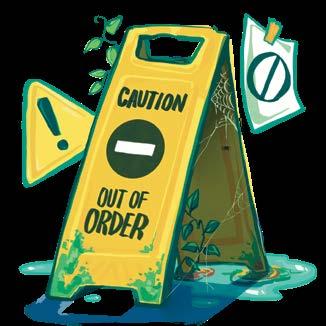

STAFF WRITER
LEA KRUSEMEYER (SHE/HER)
CREW ILLUSTRATOR
ANDY POYSTILA (HE/HIM)
How much more of CapU can break before the students say enough is enough

The other day, while I was sipping on my overpriced coffee through a soggy paper straw, I had a moment of frustration about the “Save the Environment” movement. Why do I have to drink my coffee in such an inconvenient way while big corporations out there keep messing with the ozone layer and pumping greenhouse gases into the atmosphere? After venting out my frustration to a trusted friend, she told me the same thing my mom used to tell
me as a kid, “just because someone else jumps off a bridge would you jump as well?” So I put my big girl pants on and thought just because they ruin the Earth, I do not get to participate in that same behavior because I actually care for the turtles and the dolphins. With that in mind, here are a few ways to spend the beautiful Vancouver summer days in a way that ensures your conscience can be clear and the turtles get to live another day.
There are ten beaches located across Vancouver and a day spent at the beach is always a great idea. A beach day is fun alone, with a good book or a nice playlist on your AirPods but it’s also a great activity to do with your friends. Grab a few blankets and homemade snacks, make sure you wear sunscreen, and head out for a sunny day spent at Wreck Beach or Sunset Beach. If you make sure to take all your garbage with you at the end of the day and do not feed any seagulls or fish, this is completely environmentally friendly.
Another idea that came as a shock to me, was the Vancouver Aquarium. After hearing horror stories about whales and dolphins being held prisoner in small tanks their whole life, I developed a tendency to avoid
aquariums. Doing some research on the aquarium led me to realize that the focus of this institution is to educate and conduct research that ensures the future of marine life. The Aquarium offers a student discount, so for $36 you can get to learn about marine life and admire sea animals from a multitude of species.
Strolling around a farmer’s market can also become a great daytime activity for people who have the environment in mind. The variety of small stands that sell homemade and locally grown foods offer not just the chance to try new things but also make it easier to learn about the background of your carrots, jam and other goodies. Cooking with locally grown veggies and fruits is not just great for the environment but also provides local farmers with the income they need to sustain their business.
Lastly, there is always the option to volunteer. The Stanley Park Ecology Society is currently looking for volunteers, they offer positions in which you would be removing dangerous plant species from the grounds of Stanley Park, or others in which you assist with the relocation of animals that endanger the wildlife of the Park. More information can be found on their website.
Overall, just the fact that you are reading this article shows your interest in creating a greener future for our world so I am confident that whatever summer activities you choose, you will keep the environment in mind.
Neurotypical folks, take some notes
OPINIONS EDITOR
JAYDE ATCHISON (SHE/HER)
ILLUSTRATOR
TARA ASADI (THEY/THEM)
I can’t remember the last time I knew what was truly going on in my love life. Perhaps it was through timid MSN messages in high school—someone admitting they had a crush on me and wanted to know if I’d be their girlfriend. It’s not that easy as a millennial, I am constantly brought into a room I’ve never been before, blindfolded, spun around until I feel sick and then told to figure it out. Despite all the neon signs pointing out the direction to “relationship”—spending time with friends, constant communication, the quiet moments doing nothing together—there is a roadblock that prevents actually getting there.
Suddenly dating in the neurotypical scene has become a game of who cares less. God forbid anyone admit they have feelings for the person they’re seeing—how lame. Commitment became a four-letter word and we are all walking around wanting love, but not wanting to be the first to say it. Dating shows like Too Hot To Handle showcase how commitment is so last season. Society has been slowly chipping away at my idea of romance. After being beaten to a pulp, nursing the wounds, a hero appears: Love on the Spectrum.
This dating show highlights people with autism navigating the world of dating, often for the first time. In a world where social cues don’t often come naturally, many of the participants are given coaching in the show to guide them through a first date, or how to have tough conversations about sex. As the audience watches the dates come to an end, we see an honesty that I haven’t experienced in a neurotypical setting. People ask point blank: do you want to go on another date with me? The almost brutal honesty that follows is refreshing and should be emulated by the

neurotypical community. I’d much rather have someone tell me that this isn’t a fit than to go home and wonder if I’ll hear from them again because society has drilled politeness into us and they couldn’t reject me.
Those dating on Love on the Spectrum prove to viewers that romance still exists and that it’s fun to be excited about the person you’re with. They show up with flowers, pull chairs out for their dates, express how happy they are to see them again and aren’t hesitant to ask someone to be their boyfriend or girlfriend. I’m rational enough to know that everyone’s love languages are different, but I would be pleased as punch to receive that kind of affectionate display. Some honesty that alleviates the doubts that start to accumulate when you’re unsure where things are going.
For crying out loud, just tell me how you feel—are you excited to see me? Do we need to slow things down? Do you want to hold my hand? Is this just sex with a hint of emotional enjoyment or the other way around? I’m sick of second-guessing how someone feels about me. Wouldn’t life be easier if we took a page out of the dating book Love on the Spectrum seems to be writing?
While there are scenes that may feel awkward to watch, generally we see people encouraged to go for what they want, be unabashedly themselves and make dating an endearing experience. When you find someone whose quirks match your own, let them know. I’ve stopped pretending I’m too cool to have feelings—frankly I find it a boring way to live. Life is more fun when you share it with someone, but how can you expect to do that if you’re always looking for greener grass that may or may not exist. A relationship doesn’t have to last forever, but there’s nothing wrong with making someone feel special while you can.
The common narrative on how we can curb global warming starts with remembering to take a shorter shower and learning about the three R’s in elementary school (reduce, reuse, recycle). Around the world we are increasingly urged to take action to help mitigate its impacts. From reducing personal carbon footprints to adopting sustainable lifestyle choices, the emphasis on our singular responsibility in combating climate change can be pervasive. Is our individual role that significant? These solutions, though they are good practices, are tiny, miniscule contributions implemented to distract us from the real problem: white-collared, hypocritical corporations.
If we look at the difference in impactful changes made by an individual and contrast it against a company, in any professional realm, the amount of impact is blatantly different. Something akin to putting out a forest fire with a squirt gun when the real culprits are hoarding firetrucks and air tankers. The focus on our individual carbon footprint overlooks the significant role big corporations and billionaires play in global warming and takes away their accountability.
Everyday people are constantly reminded of their carbon footprint and encouraged to reduce their impact on the environment, whether that be through habits such as biking to work or sorting garbage. And while personal choices do matter, they pale in comparison to the colossal footprint of these influential, multinational corporations. Yet, that narrative of individual responsibility persists, perpetuating feelings of guilt and inadequacy among ordinary people.
We’re bombarded with ads for eco-friendly products, where the going rate for a tote bag is $30. Because nothing says “saving the planet” like contributing to corporate profit in the process. That brings up the topic of greenwashing and its harm not only to the planet, but also with its spreading of misinformation. As a strategic marketing tactic masked as environmental conscientiousness, greenwashing poses a significant threat to genuine sustainability
ILLUSTRATOR CAMERON SKORULSKI (HE/HIM)efforts. It isn’t just about misleading consumers; it’s about undermining real efforts to make a positive impact on the environment. It’s like putting a band-aid on a broken leg instead of fixing the problem at its core. And while it might make us feel like we’re doing our part, in reality, it’s just sweeping the bigger issues under the rug.
This is only one of many ways big corporations wield immense power and influence, and how they shape policies, driving consumption patterns on a global scale. Their relentless pursuit of profit often comes at the expense of us, the little guys, and the planet. Environmental regulations are routinely and openly disregarded in the pursuit of silly short-term gains. From deforestation to fossil fuel extraction, their actions have far-reaching consequences that cannot be curbed by individual acts of eco-consciousness.
Moreover, the burden of sustainability disproportionately falls on marginalized communities and developing nations, while the rich continue to profit from environmental exploitation. With no care for any shape or form of morality, the only goal of big corporations is to make a profit. It’s the indigenous communities fighting to protect their land from companies and low-income neighborhoods dealing with pollution from factories that are really getting the short end of the stick in a system that cares more about making money than saving the planet.
So how can we shift the focus from individual guilt to systemic change and collective action in addressing global warming? We must reframe the conversation around climate responsibility to center on systemic change and address the root causes of environmental degradation. The collective impact of individual actions is limited without broader engagement and advocacy for systemic change. Mass mobilization, community organizing and political activism are crucial for holding governments and corporations accountable for their contributions to climate change. They are just some of the ways we can begin pushing for transformative policies and initiatives.

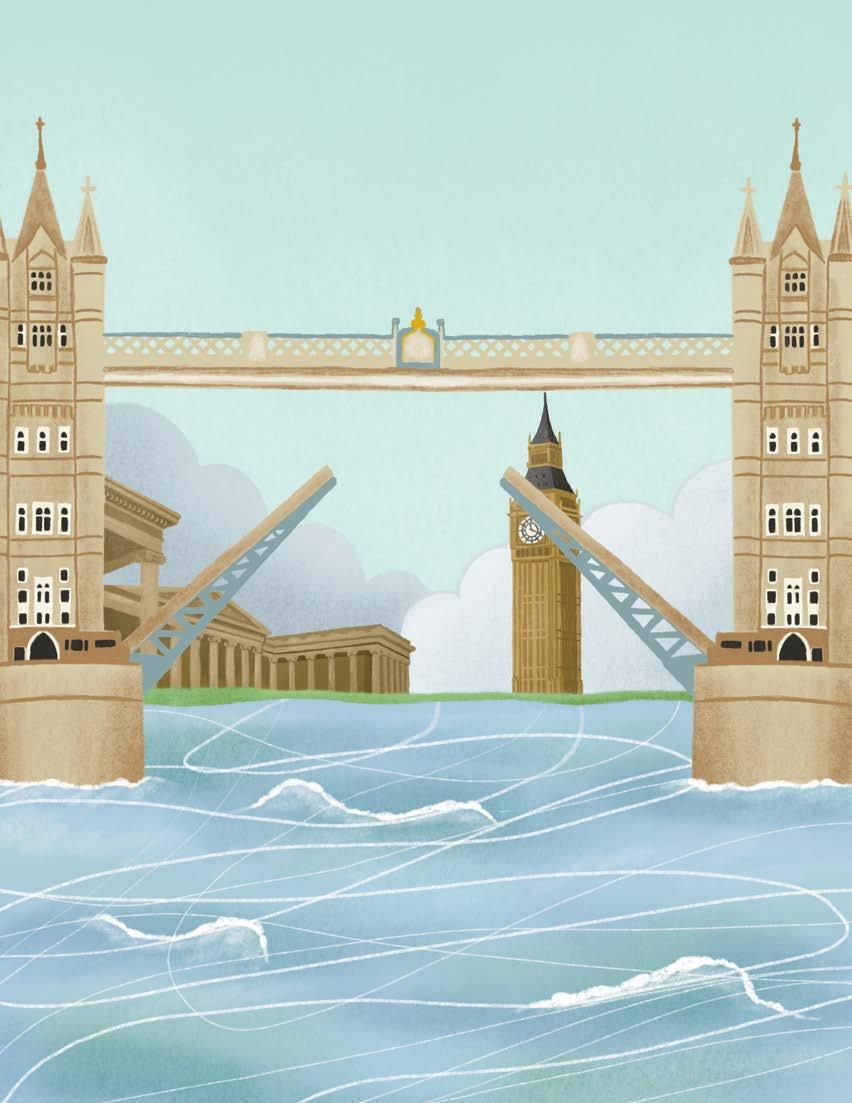
What to know so you don’t “panic on the streets of London”
Visiting London can feel very intimidating, or at least it did for me. I spent years of my life in Canada hearing about how magical the city was, and seeing romantic visions of Buckingham Palace and Covent Gardens in movies and TV. Since I only had three days in the city, I wanted to fit in a mix of sight seeing and local experiences. With a little guidance from my friend, who not only grew up in London but let me crash at her house, I managed to do everything on my list and still make it back to Amsterdam in time for my Monday morning class.
I wasn’t expecting to be as star-struck by the city as I was. Just getting from the airport to East London, I passed by multiple places that I had heard of so many times they had begun to feel fictional: Paddington, Tottenham Court Road Southall, King’s Cross. By the time I made it to my final destination I was pretty giddy. Unfortunately, it was too late at night to get straight to sight seeing. But all of that pent up energy was put to good use the next day.
My friend and I headed out bright and early, hopped on a bus (I insisted on sitting on the top of the double-decker, of course) and drove into the city. First stop, the Tower of London. If you have the money to spend, the tour around the castle looked to be a very good time. As it was, I decided to spend my money elsewhere, content to look around the outer perimeter of the fortress. My friend was initially confused as to why I was practically jumping up and down with excitement, and she was shocked when I explained that I had never seen a “real-life castle” before.
The day didn’t slow down from there. We went on a tour of Tower Bridge next, and looked down on the city from the glass floor 42 meters above the Thames. Make sure to bring your student card, as a lot of attractions in the city offer student pricing. However, you won’t need it for museums like The National Gallery, Natural History Museum, or the next place we visited, The British Museum. There are more than 20 museums in London that you can visit free of charge. I didn’t have time for many, but they are a top priority for my next visit. Particularly the dinosaur on display at the Natural History Museum.
The British Museum was so large that there was no way to take in everything in one visit. My friend and I wandered the hall for hours, trying to soak in everything we could, and barely made it through six exhibits. My advice would be to go for depth over breadth, and choose a few things ahead of time that you know you want to learn about so that you don’t miss out.
Trafalgar Square was packed in the daytime, but going back at night was one of my favourite parts of the trip. Perched at the foot of Nelson’s Column behind the lion statues, there was an incredible view of the square, the city and the National Gallery. I sat there for hours listening to the music and conversation of people around and enjoying the view.
For students on a budget there are a few other things that I would recommend to help maximize your experience. First, get out of the city center. Leicester Square and Westminster were really fun, but other less popular areas were incredible to visit, and where all the best kebab shops were. If you’ve had enough of the Underground and want a change of scenery, the Uber boat down the Thames was a super fun and surprisingly cheap way to get a view of the whole city.
I had an amazing time in London, although my trip may be a little tourist-y for some people’s tastes. For me personally, it was nice to let go and enjoy seeing red telephone booths and postcard-worthy landmarks in person. Next time I visit I’ll have a whole new list of things to visit, and I won’t get lost on the Underground nearly as much.
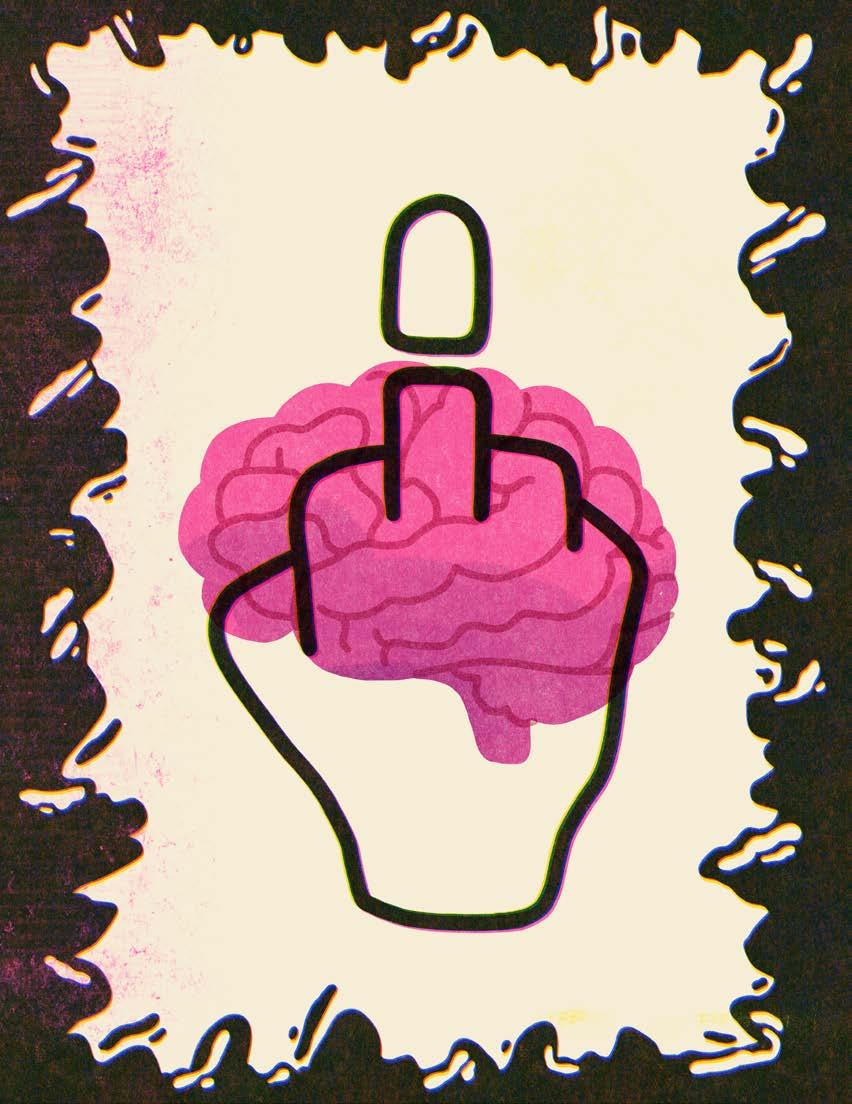
Move over Chicken Soup for the Soul, there is a Psychiatrist who has effectively changed the state of self-help.
To those who have spent enough years scouring the self-help section to know all the big players, you’ve likely seen a little pastel covered collection of vulgar books titled “Unf*ck your ____.” Most of us know the big ones, but there are way more than most of us have ever seen. Let’s do a little fill in the blank game.
Q: Finish the name of this popular self help book: ‘Unf*ck Your ______’
Is it…
a. Brain
b. Friendships
c. Boundaries
d. Intimacy
e. Masculinity
f. Sex Toys
g. Anger
h. Body
i. Anxiety
j. Adulting
k. Stress
l. Depression
m. Consent
n. Writing
o. Cunnilingus
p. Grief
q. Blow Jobs
r. Worth
s. Burnout
t. Addiction
u. Fear
v. Kink
w. Dating
x. Year
y. Business
z. Shame????
P.S. that’s to the whole alphabet!
A: The correct answer is all of the above.
That’s a lot to cover. Author Dr. Faith G Harper is a counselor, certified sexologist, applied clinical nutritionist and consultant. She is also a TEDx presenter, and a self described “badass, funny lady with a PhD”. Her series Un F*ck your ___ made her a Wall Street Journal bestselling author. Many of us have found these on the bookshelves of our parents, of a corporate bookstore or sent unprompted to your P.O. box in your freshman year of college by a family member. These books have served as cheap counseling, free sex-ed, and relationship advice for years. Today, I’d like us to unpack the way Harper uses casual language with an all-knowing tone to soothe their often panicked consumer. To do so, we’ll be comparing two passages from entirely different subjects—Sex toys and Grief.
Sex Toys: An excerpt from the back synopsis.
“Sex toys, sex tools, sexual aids—whatever you call them, they have the potential to revolutionize your sex life. [...] But damn, they can be expensive if you buy them now. Sexologist and therapist Dr. Faith is all about making sure you know how to get off safely and on a budget”.
Now, let’s compare this to her book: Unf*ck your Grief
Grief: An excerpt from her back synopsis.
“When we lose someone or something close to us—a loved person or animal, a relationship, our health, our dream, our idea of who we are—it hurts. A lot. Dr.
Faith [...] brings us a counseling, and a neuroscience perspective on grieving”.
There is clearly a massive difference in tone throughout these books, and that difference is echoed all throughout her collection. This is perhaps what makes Dr. Faith so universal. She does not have the professional, work-friendly voice of a Chicken Soup for the Soul, yetseems to offer a softer approach. Especially compared to a similarly named and even more famous ‘The Suble Art of Not Giving a Fuck.’
Dr. Faith understands the line of a helpful hand and a non-chalant bystander, and walks it perfectly. She gives you humor, candidness, and vulgarity to the length of in-depth tutorials on homemade sex toys and a book-length guide dedicated only to “Unf*ck[ing] your Blowjobs.’ This open voice is also used to explain grief, depression, loneliness and some of the most difficult topics. Although her methods may not be conventional, her efforts have paid off, and we can only hope that more self-help writers will follow in her approach.
It is seen now more than ever that readers do not want to read a novellength doctor’s visit, but they also aren’t interested in a ‘girl-bossified’ version of the genre. We want honesty, and we want the truth without having to spend thousands of hours and dollars on a therapist’s couch. This is why I believe Dr. Faith succeeds in showing us what we need as we progress into the genre of self-help.

I feel like a hypocrite every time I get on a plan
In my apartment, I have a big container to place my paper, plastic and glass recyclables separately into. I have a compost container in my freezer, ensuring all scraps find a home there. I do what I can, what I’ve been told to do, in order to save the planet. Though I know the responsibility does not lay entirely on my shoulders, I still feel the pressure. While I do my part at home, I struggle to find an ecofriendly way to navigate the skies.
Flying is inherently the least sustainable way to travel, yet thousands of people do it every day. It is a necessity for many travellers, and often is unavoidable. While some planes are friendlier for the environment than others, it still feels like a twisted joke to try and be environmentally conscious while operating any flight over three hours.
If you’ve been on a plane that provides beverages, you will see flight attendants cracking open a lukewarm can of Coke, using it for a few guests and then placing the empty can back into their cart. Looks good, but what happens to all the cans once the service is done? I’m happy to let you know that unopened cans get to live another day and are left in the cart to be used during a future service. Any remaining soda or juice is dumped down the drain after each service and the cans are placed… into the garbage.
On short flights with only one service, we are able to place the cans back in the carts and allow catering to do the required recycling. However, if we need to reuse the cart for a second service, those empty cans are taking up space from unopened cans and have to be thrown out because we have nowhere to store them. Unfortunately, when anything goes into the garbage bins on a plane, that’s where everything will end up. There is no one sorting through the bags on the ground or at a facility.
However, many flight attendants try to maintain the least amount of waste as
possible. We have been shown that the catering company that collects the service carts does put any opened can, carton or bottle into proper recycling bins before restocking. This has motivated many of us to shove anything we can into each cart at the end of the flight, hoping we alleviated even a tiny percentage of the guilt.
When it comes to containers, some are willing to go the extra mile and some aren’t. I don’t blame them because there is not enough time t to go through and be meticulous about where everything is being thrown out. An average flight time between Vancouver and Calgary is an hour and seven minutes. Having to serve roughly 174 people and collect their garbage? It’s a race against time. Additionally, turbulence is a regular occurance in my life and it is simply not feasible to get through the cabin or organize the carts safely. While I want the planet to be habitable for years to come, safety is my number one priority.
Unfortunately, along with an iffy at best recycling program in the sky—any fresh food that is not purchased or eaten is ultimately tossed after each flight. It feels like a kick to the gut every time I see it happen, and wish I had brought tupperware to save something for myself. Due to food regulations, it’s understandable, but that doesn’t make it hurt any less.
Realistically, it shouldn’t have to be up to the crew to make each flight as environmentally sustainable as possible because our office is a fuel-driven beat 40,000 feet in the sky. A couple cans of Sprite slipping through the cracks are the least of our worries when we step onto a Boeing.

Spring has sprung and nature has once again offered us a wonderful lesson on life. We can see in real time, blossoming in front of us, the cyclic existence that is living. This spring I am inspired by a couple things. First, the sun and how much seeing it really does affect our human experience. Truly, top notch stuff. Second, is the idea of growth and the depth of what growing really means.
When I got my concussion, I believed I could have complete control over my recovery. With enough attention, accuracy and analysis I could protect myself from any future upset and see myself through the healing perfectly. I believed ‘growth’ was coming out of this experience with the tools to never feel pain or fear again.
Well… At some point I realized that hyper attention, critical accuracy and consistent analysis is also a great concoction for another thing: Anxiety.
Anxiety can seep into our mind and take hold of our body in many ways; it roots in the feeling of danger and perpetuates the fears of our past. It’s tough stuff. Especially when you get into states of constant nausea, headache, dissociation and panic attacks. In a state of anxiety the mind and body become cyclical forces of suffering when the underlying assumption is “I am unsafe,” and “I can’t control it.”
I look at the bush outside my window.
I don’t know the name of the bush. I’m not a botanist. But the budding flowers on it are what’s important to me now. The beautiful growth of a plant that I have watched be pummeled with snow,
COLUMNS EDITOR SARA BRINKAC (SHE/THEY) ILLUSTRATOR JASMIN LINTON (SHE/HER)drenched in rain and tossed like salad in the wind. It has survived. Not by stopping these forces, but by accepting them. Through allowing the snow to insulate it, letting the rain hydrate it, and releasing that which does not serve it to the wind, the plant has grown.
I believe to grow is to work with your environment. To not see things as a fight to be had or a poison to be avoided but rather an acceptance of experience. My concussion flattened a large part of my life. I felt the garden of my mind had been set aflame with suffering. Everything I knew to keep me safe and my heart open had disintegrated to a toxic ashy fear. I felt I was near unsalvageable, I was fragile and could be destroyed by the slightest inconvenience. But life, in its ever humbling existence, had to continue. No matter what I thought about being unready, life had a way of confronting me with new scary experiences
After a while I made a choice, at my own pace, to accept my pain. It wasn’t at all straightforward and I still have weeks of being consumed by it. But I have made a decision in my direction of growth and to allow my environment to open my heart rather than embitter my soul.
In the last few months, the wind has picked up and the ashes from the fire are stirring. The dense layer that covered the garden of my mind awoke softly and is beginning to dance away with the wind. However, just enough is deciding to stay and lovingly give nutrients to the soil.
My mind is becoming lighter as I let the fear of my past be carried by the wind. I still have incessant whispers that run
scared pulling at my sleeve terrified of life. My new relationship with my environment however has allowed me mercy and compassion for these fears. I am beginning to grow with them rather than be buried by them.
Letting go is hard. Really hard. When your body, quite literally, holds onto trauma it becomes acclimated to a state of pain. I believe that growth is the process of reconciling with what you subconsciously fear. When one releases the need to control their pain they allow the room to grow from the experience they had. By not obsessing over direction, where or who you are supposed to be, one can allow life to unfold in a much more loving manner. You can watch your mind from a state of curiosity and compassion rather than a state of pressure to be better or safer.
After this process with my concussion, I am developing confidence in the fact that I can always find my state of harmony. While I may become unbalanced and fearful when confronted with new experiences, I trust now that I can release my need to control. I can allow life to be.
Now, I sit at the top of a large oak tree looking below at the land. Rivers and valleys I never thought existed, released from things I once fearfully gripped. I think to myself “Huh… Now how ‘bout that.”
Welcome the heat of summer with our trusty Courier Companion! Cut him out and create the vibe of your paper pal for vacation!
1. A nice cold glass of iced tea, all the better to quench that thirst of a long deserved break after all nighters and final exams.
2. Sun hat, perfectly sized to keep our paper pal’s head cool.
3. T-shirt. Welcome the sun by showing your appreciation for it while wearing a custom shirt with it glammed up in some sunnies.
4. Of course when going swimming you’ll always need a handy dandy pool floaty-duh! This fella will keep you afloat after the burnout you might’ve experienced this term.
5. Flower shades. Everything is finally in bloom, it’s time to go smell the roses! Or wear them..
6. Denim shorts, a timeless classicno other words needed.
7. Sunscreen, SPF 60 in particular. Our paper pal is already dealing with an intense sunburn, but a good slather of some SPF 60 should help do the job!
8. Sandals. Leave the foresty mountains of Capilano and head to beaches where you can run into the ocean and whip off your shoes with ease.
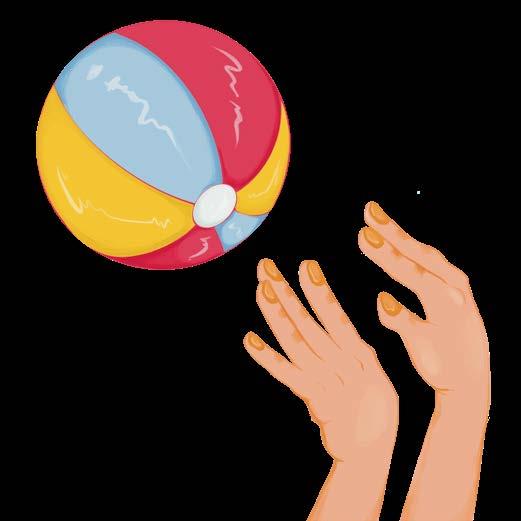
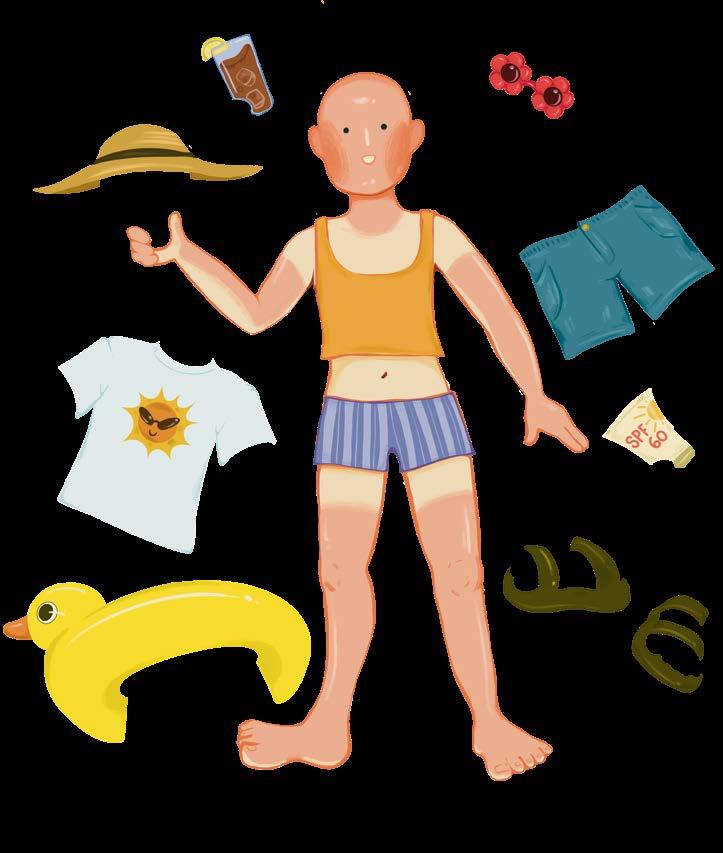

The end is right around the corner, and what better way to say good bye to this term than to gather signatures from yourself, some friends, or instructors that have made an impact on you this year! H.A.G.S. to all of our lovely readers, conrtibuters, and crew members.

CAPILANO UNIVERSITY is located on the traditional unceded territories of the LíỈwat, xʷməθkʷəỷəm (Musqueam), shíshálh (Sechelt), Sḵwx̱wú7mesh (Squamish) and SəỈílwətaʔ/ Selilwitulh (Tsleil-Waututh) Nations.
We recognize our presence here as guests on this sacred land and deeply appreciate the privilege to work, study, and reside in this remarkable place. The Capilano Courier acknowledges that this gesture is just a starting point on the path to reconciliation, and we are committed to amplifying Indigenous voices and sharing their stories.
THE CAPILANO COURIER is an autonomous, democratically-run student newspaper that encourages literary and visual submissions. However, all submissions undergo editing for brevity, taste, and legality. We are committed to not publishing material that the collective deems as promoting sexism, racism, or homophobia. The views expressed by the contributing writers are not necessarily those of the Capilano Courier publishing society.
Additionally, we prioritize a human-centered approach to content creation and do not support the use of AI in our editorial processes. We believe in the value of human perspectives and storytelling in our publication.
Maple Building 122 @CAPILANO.COURIER